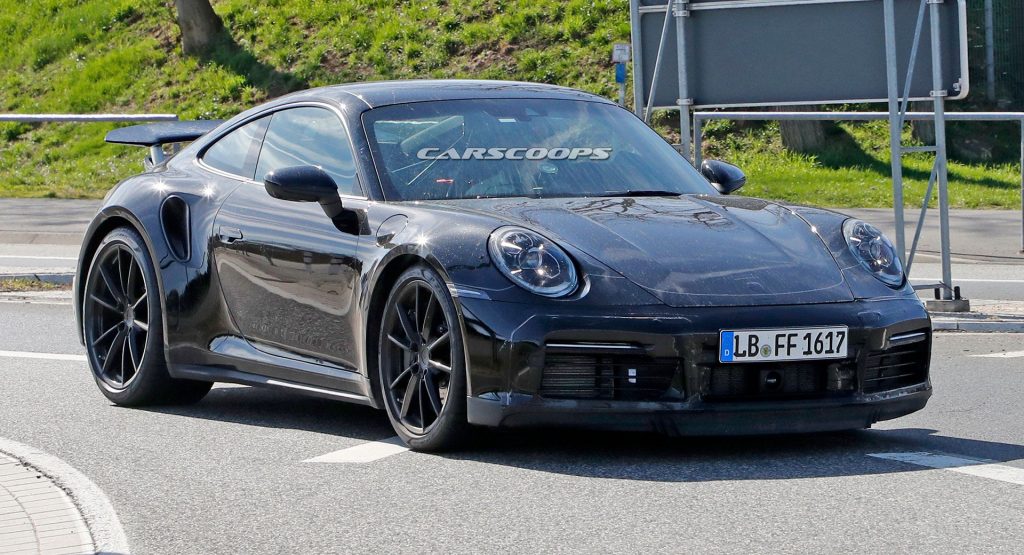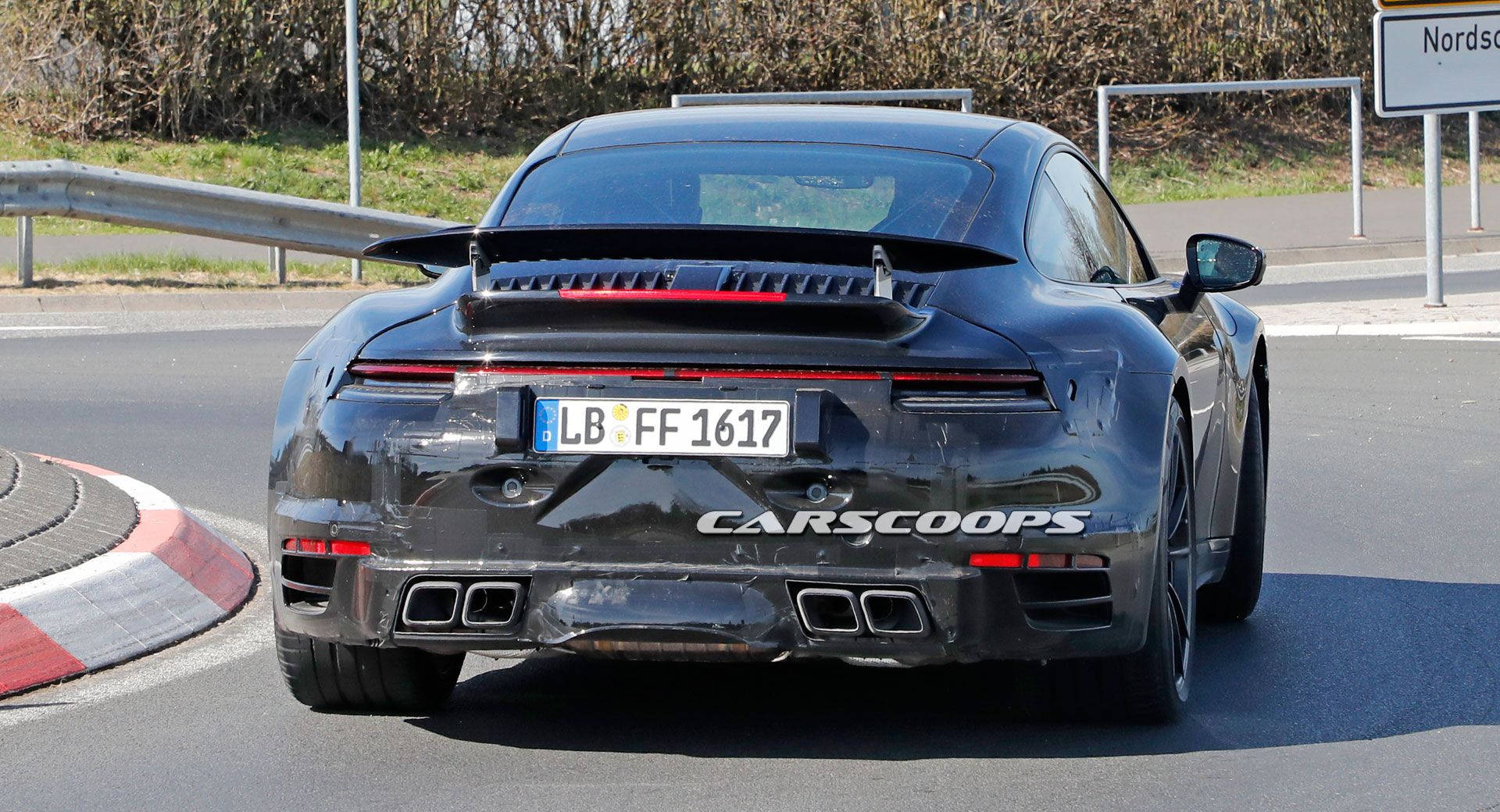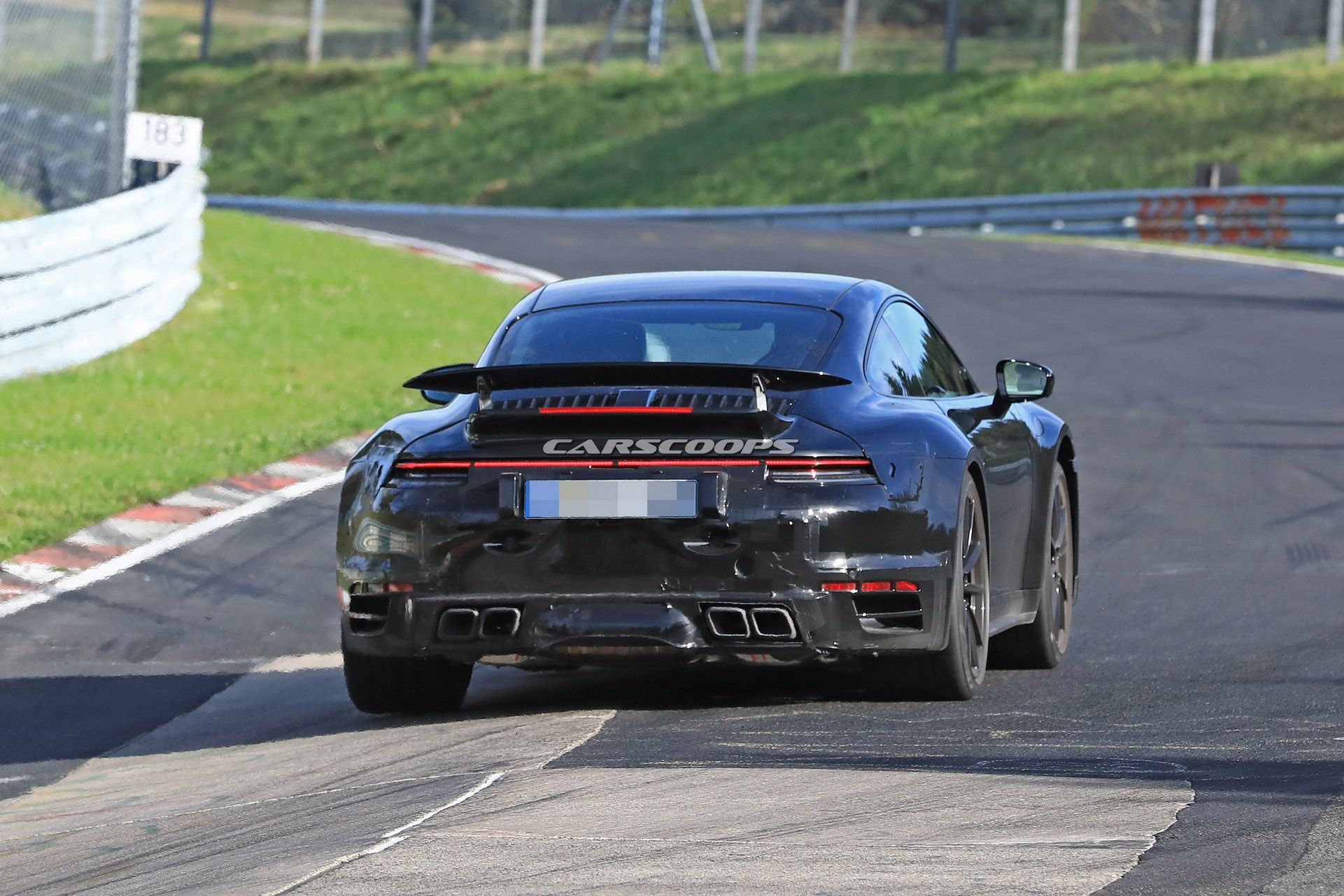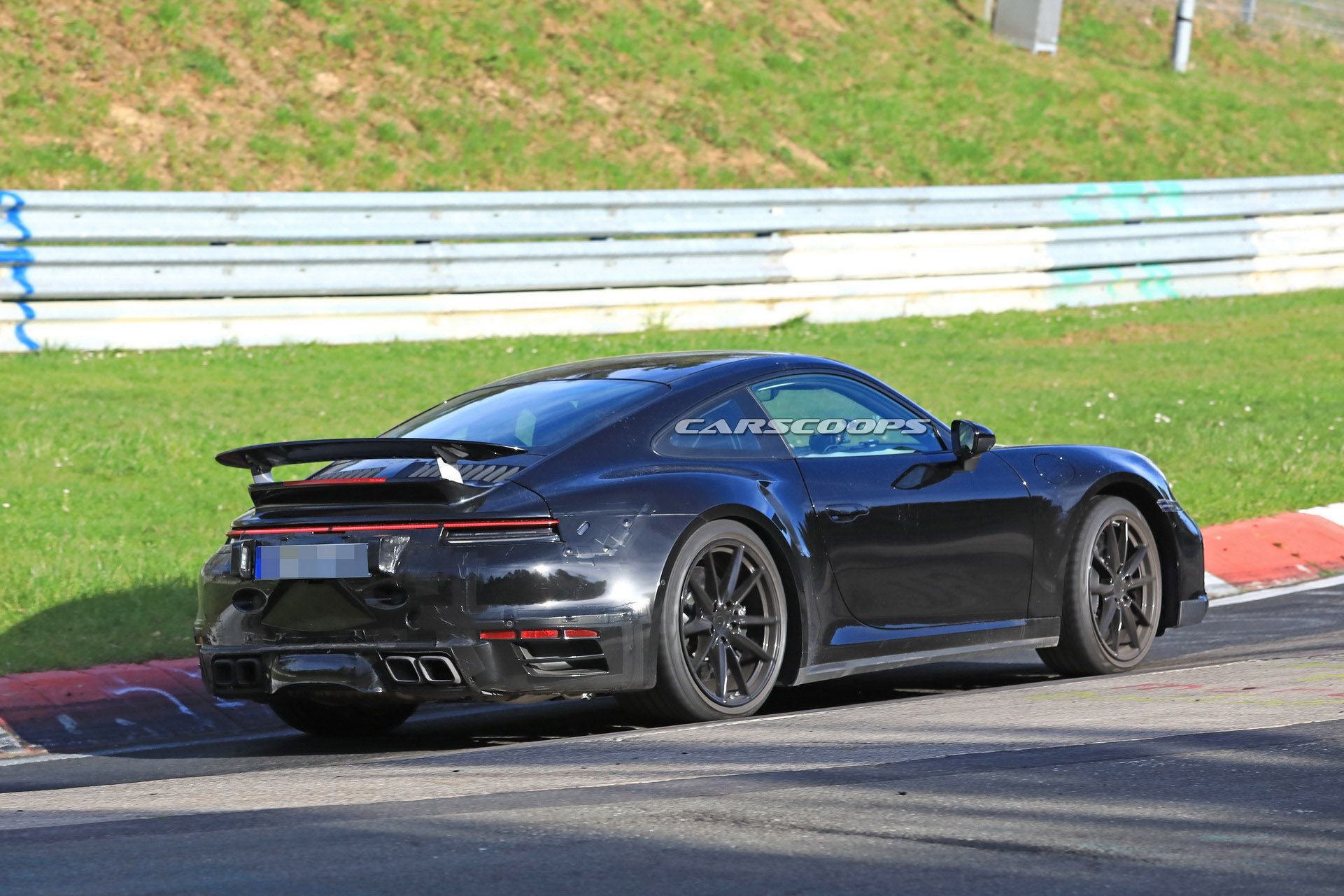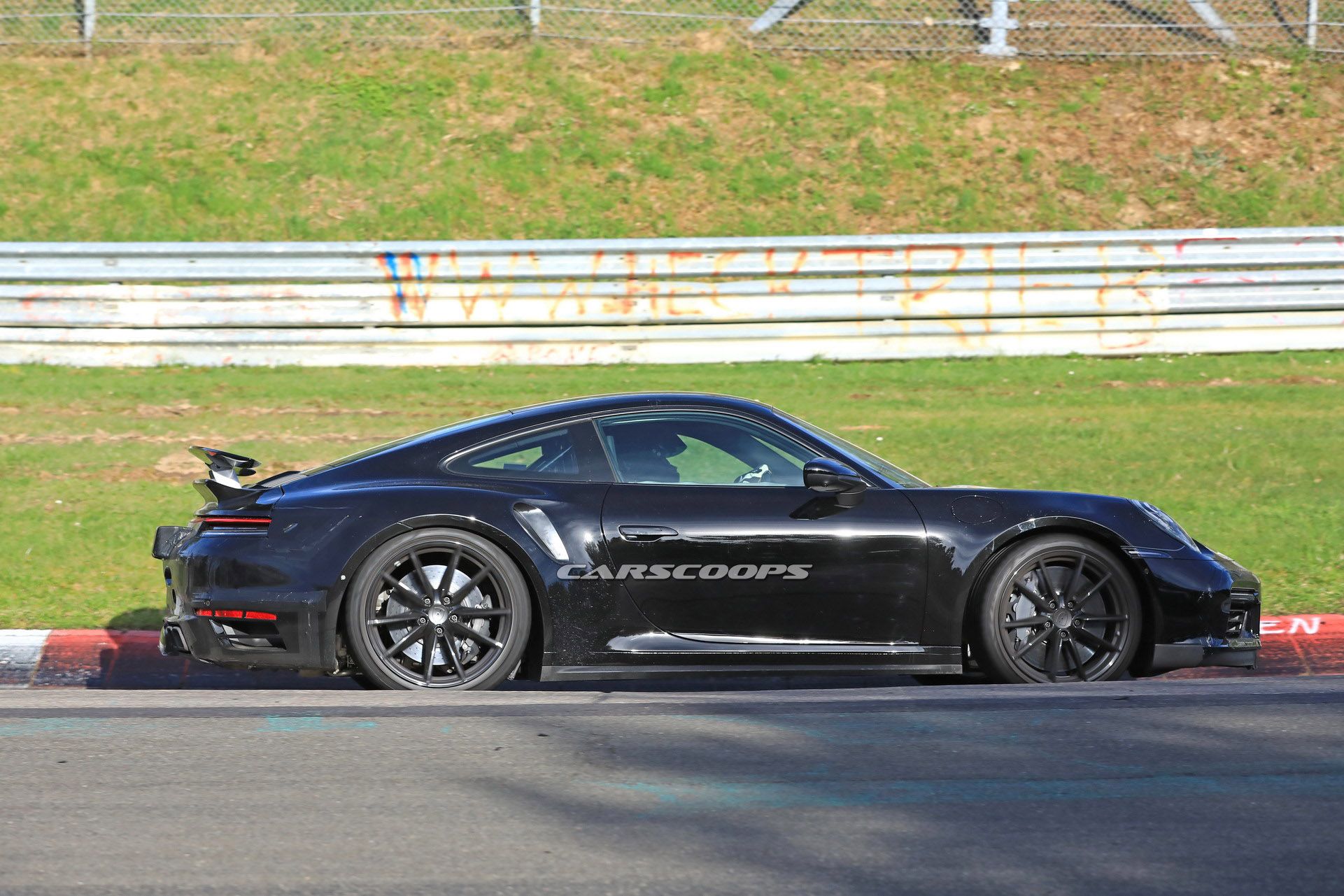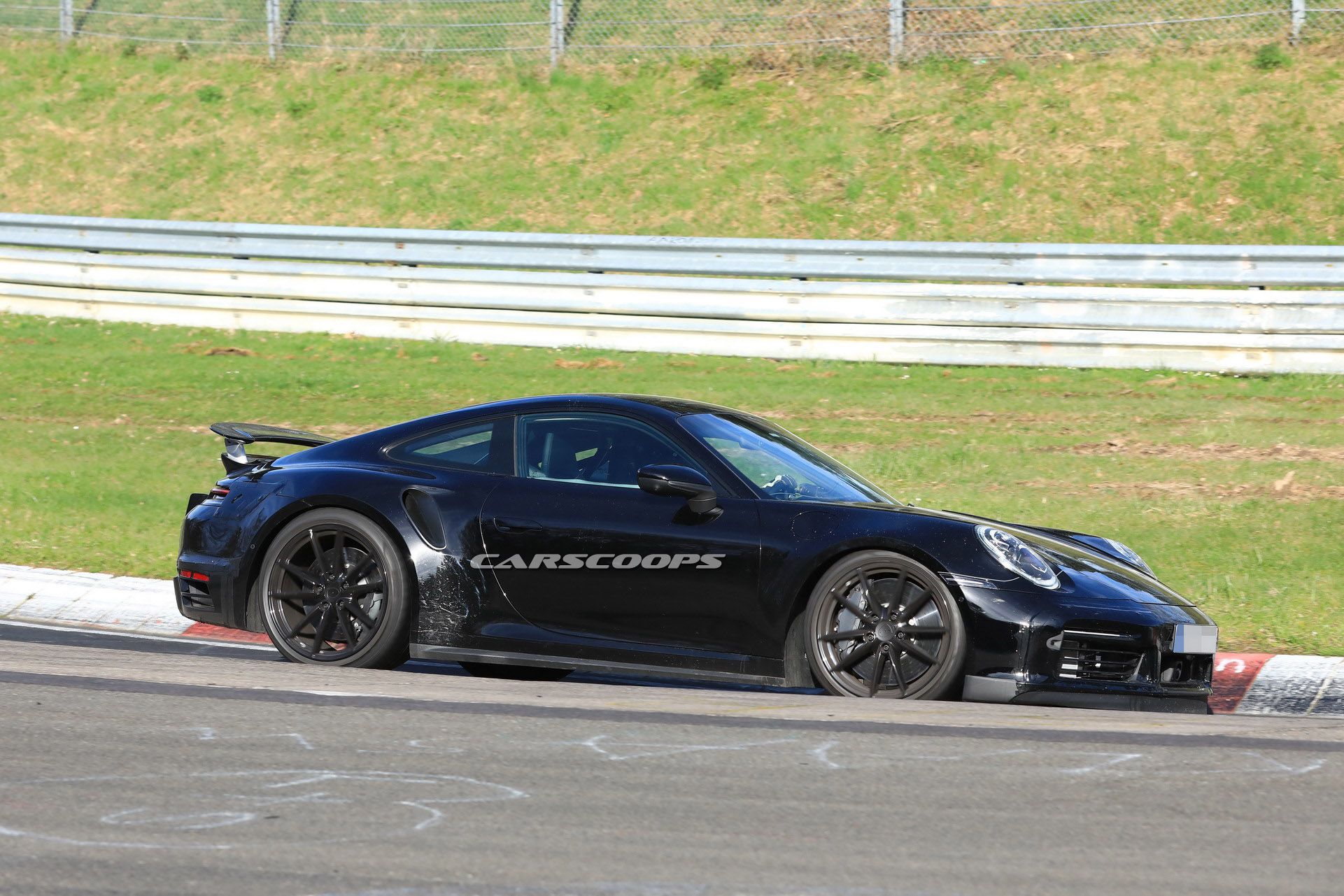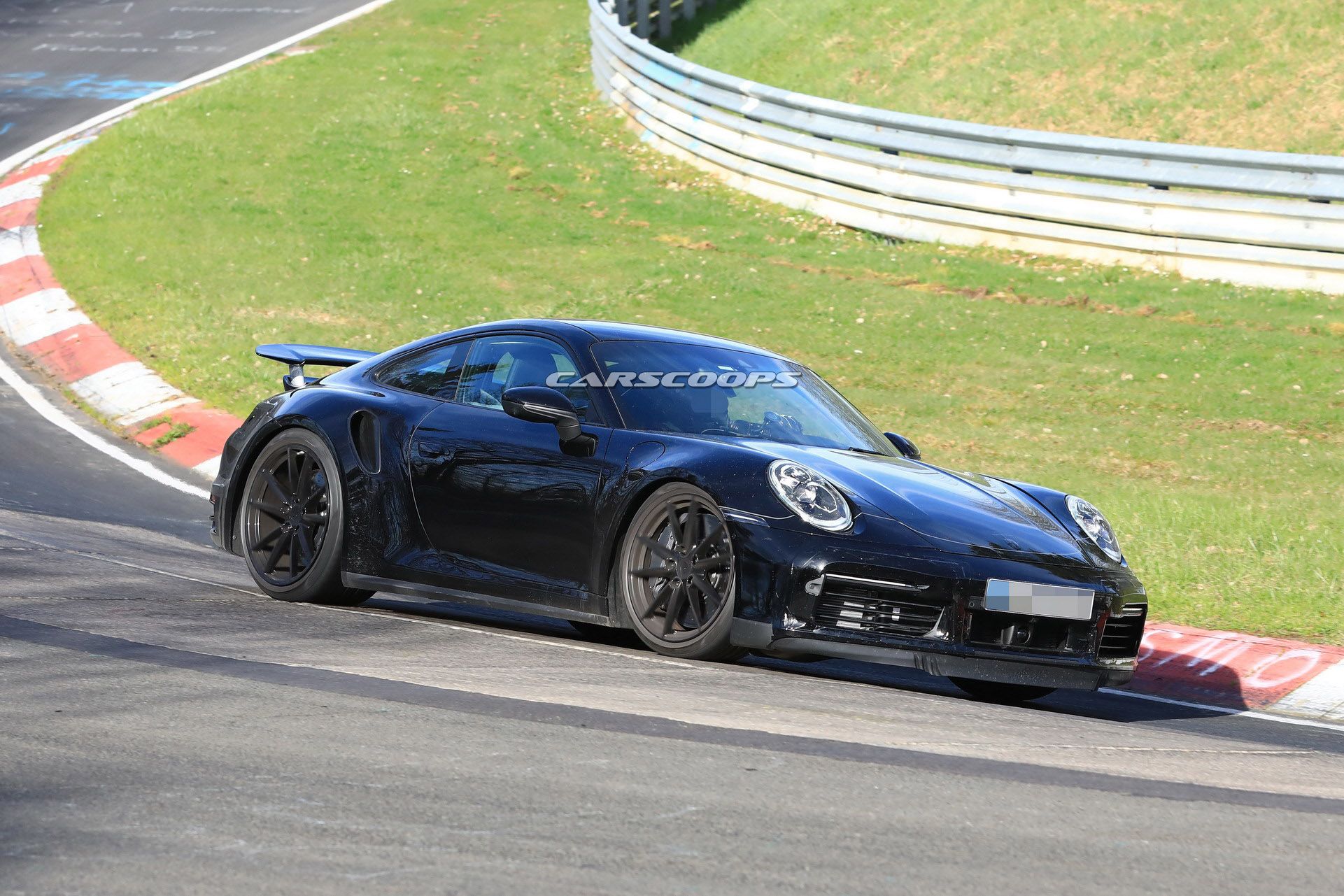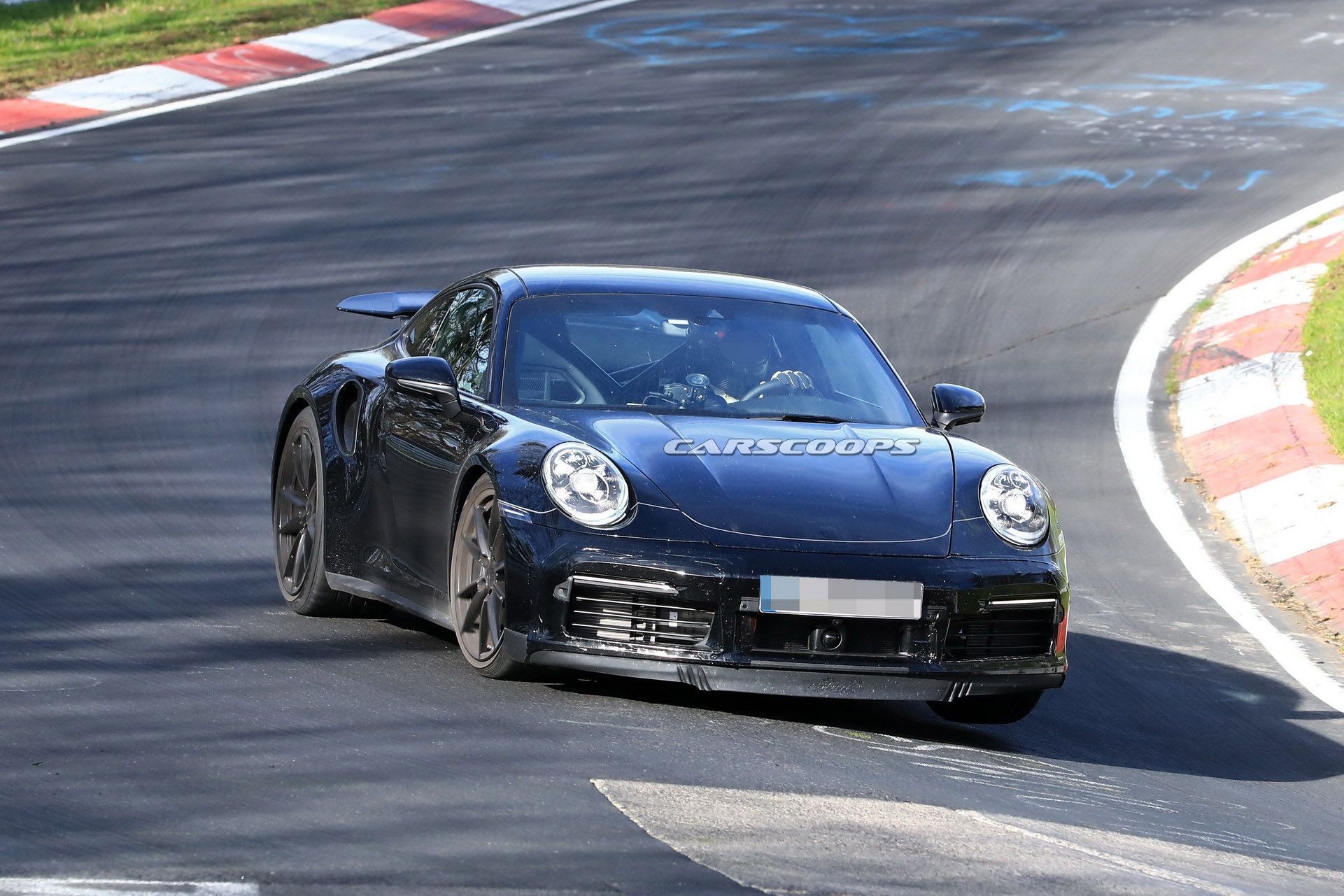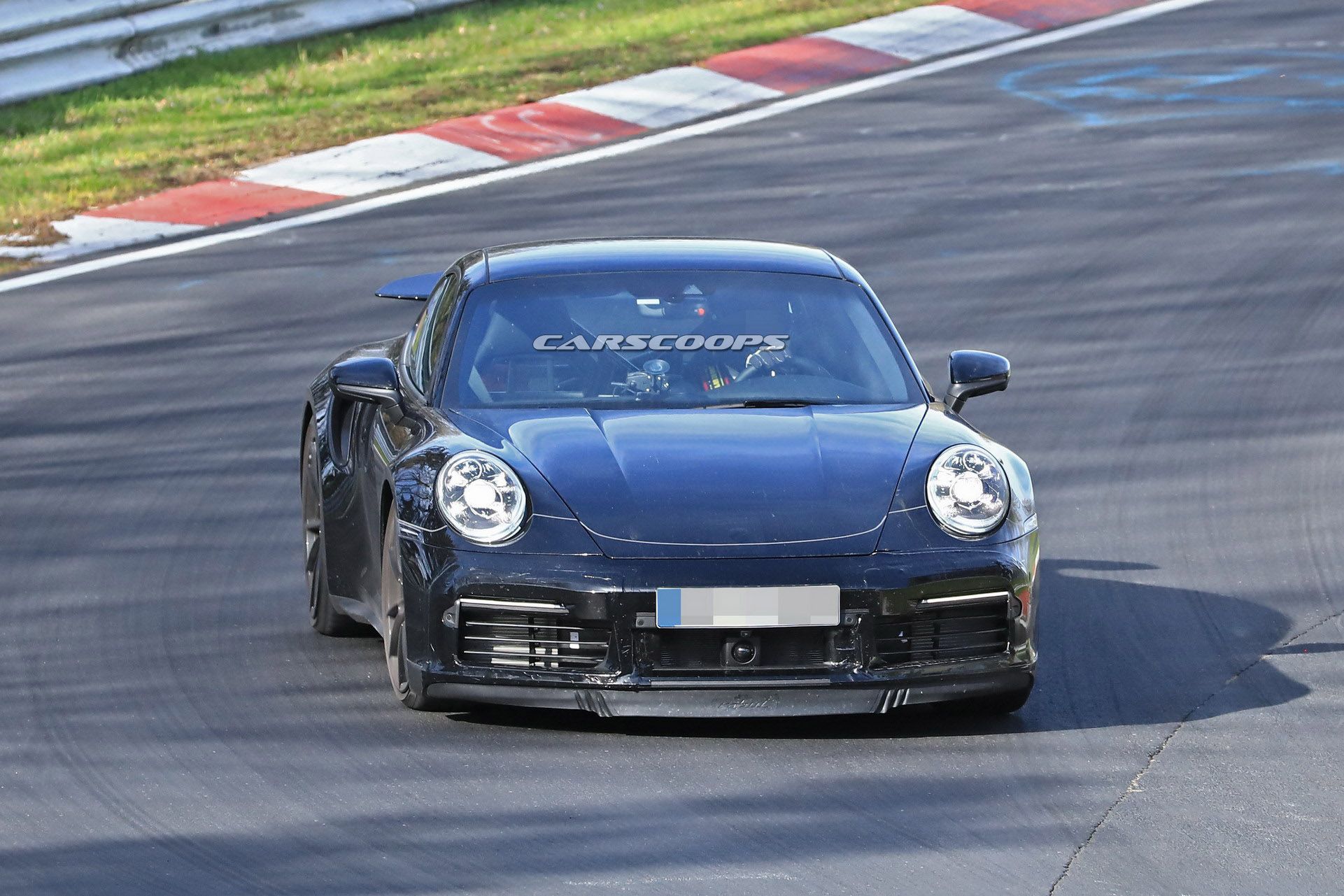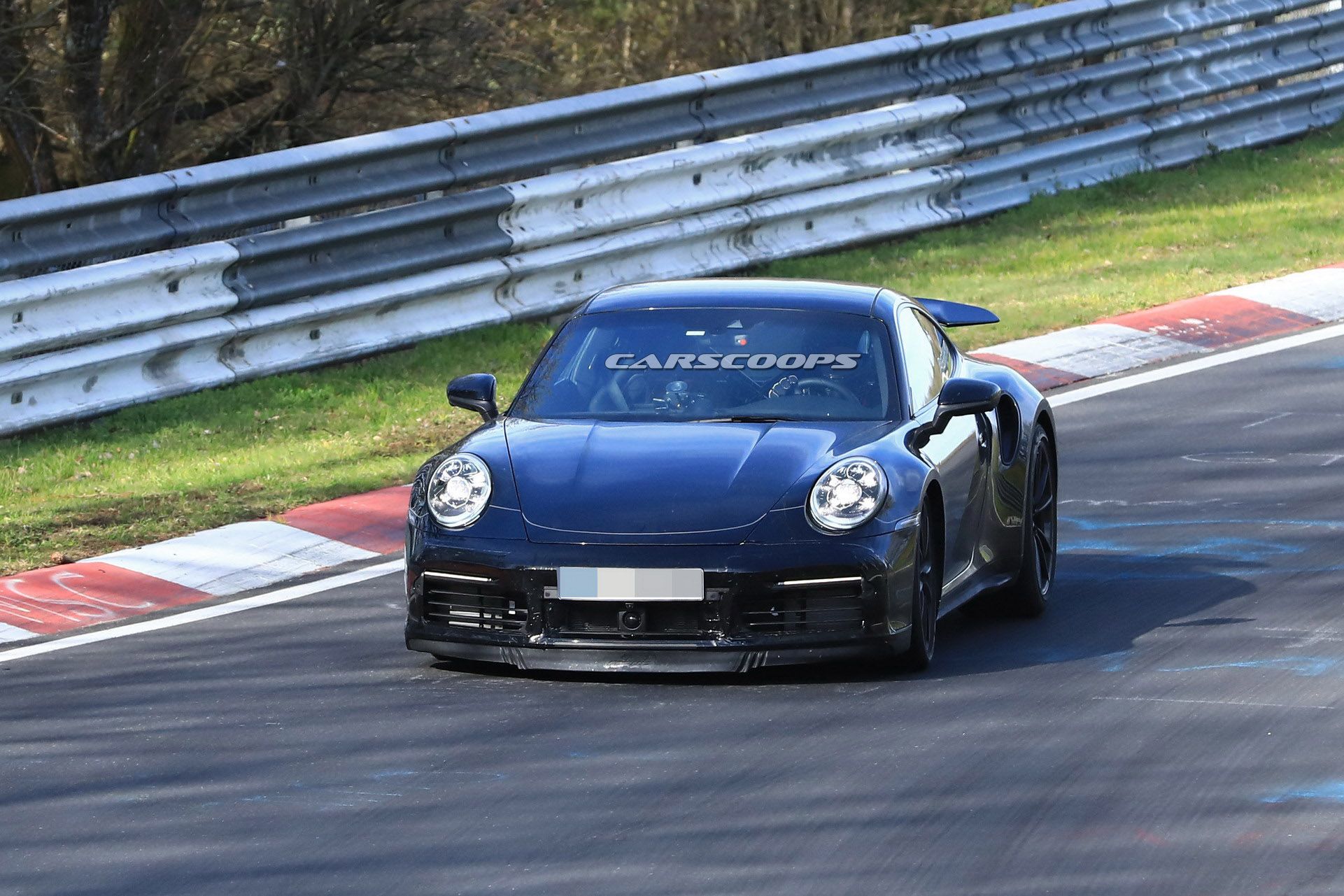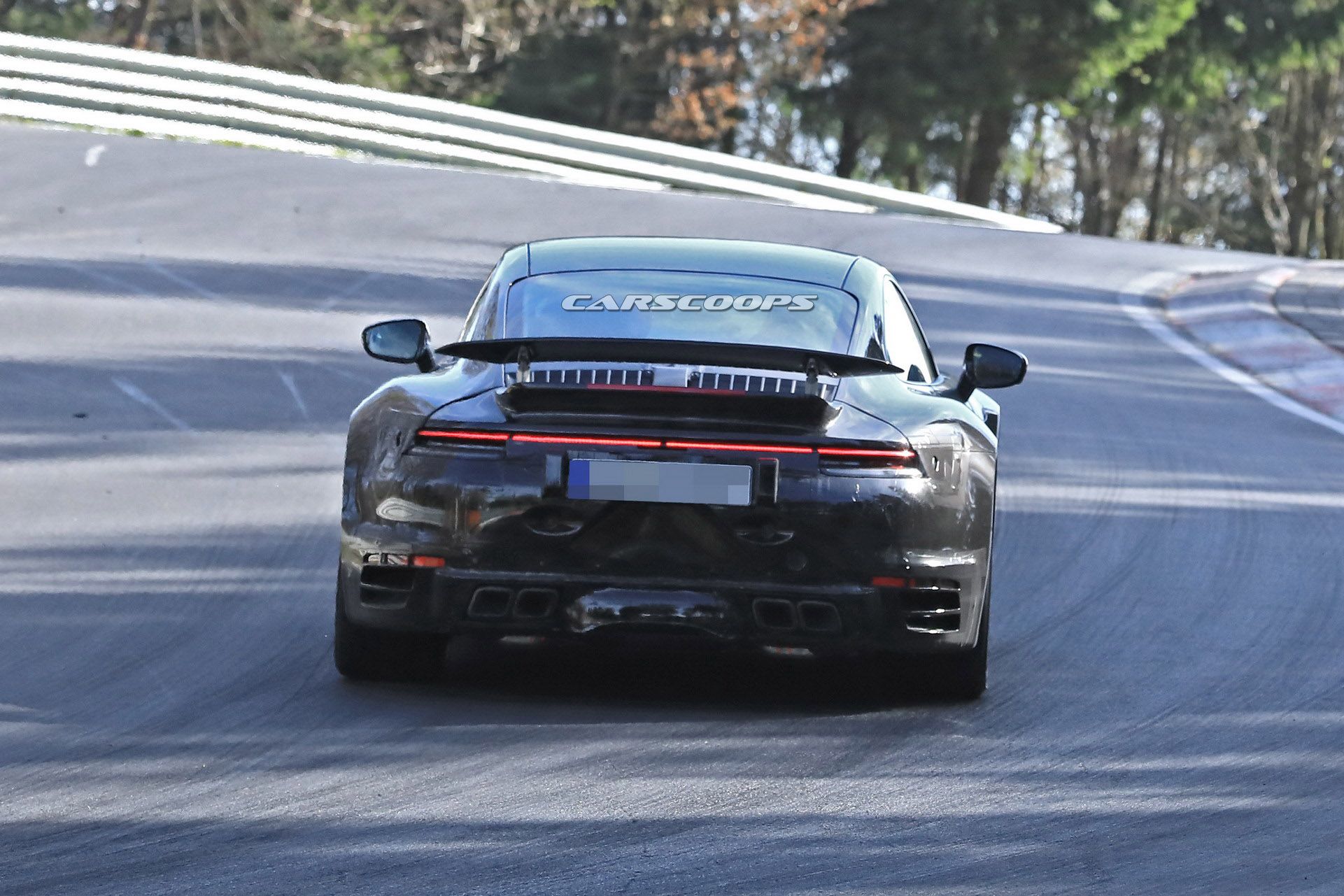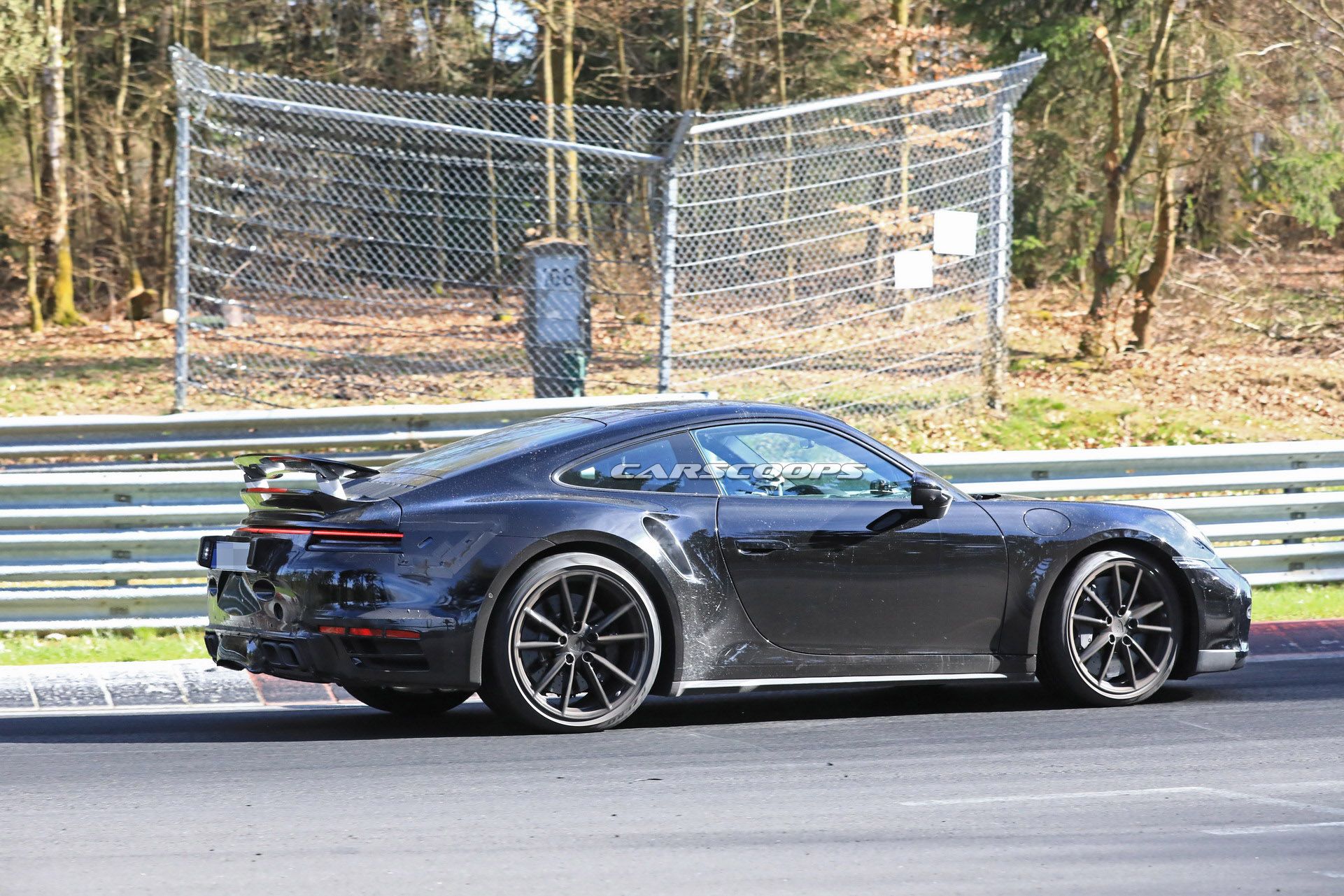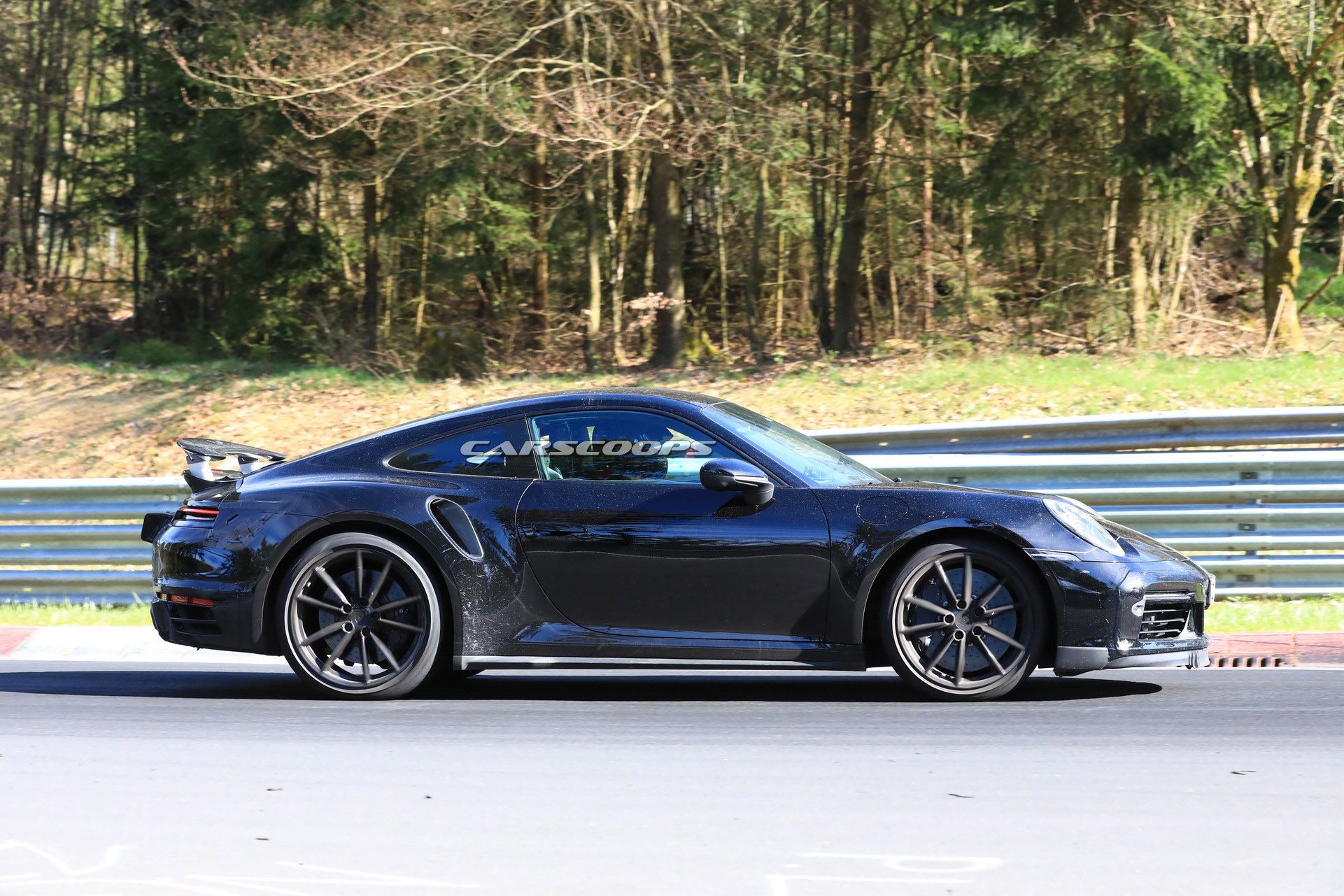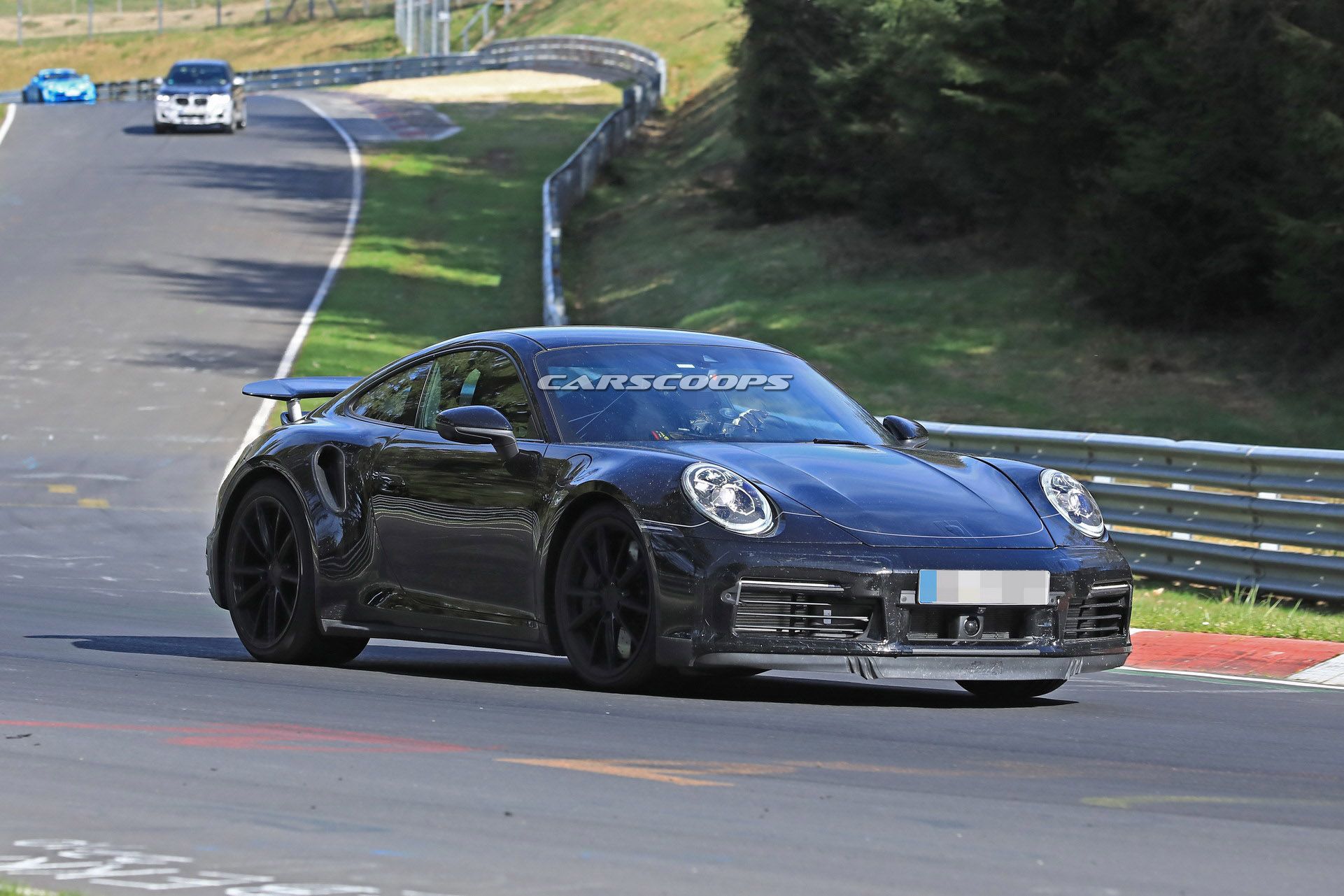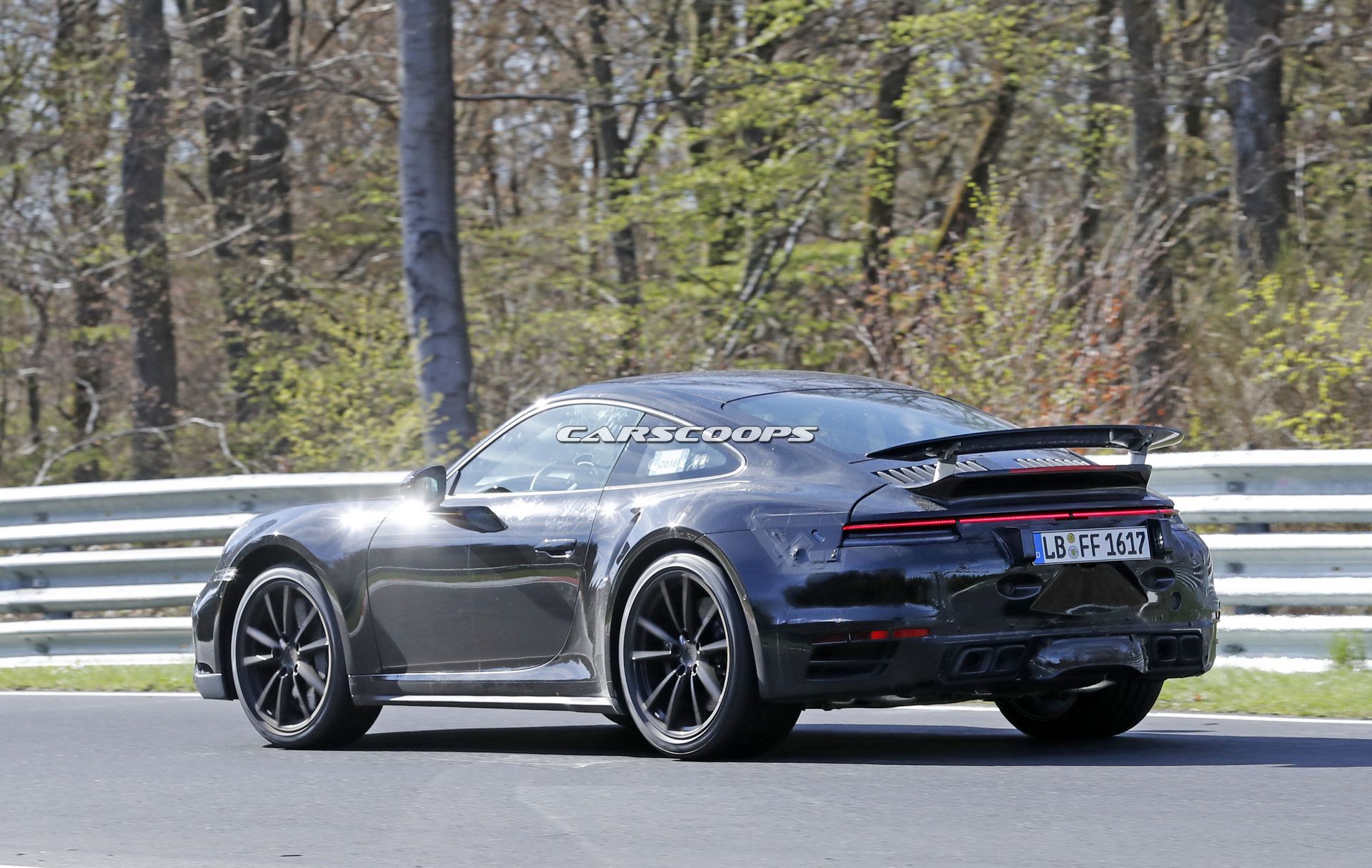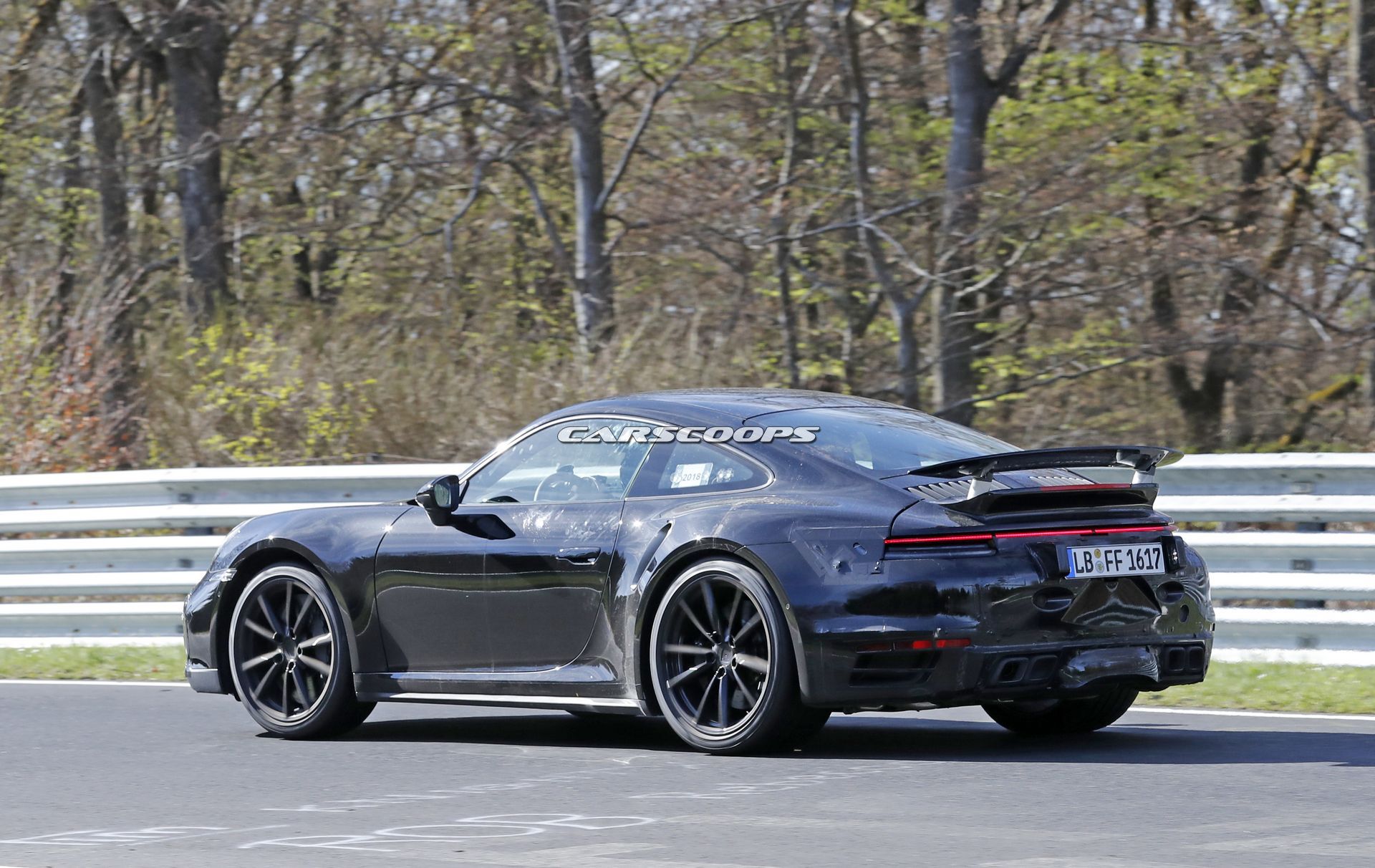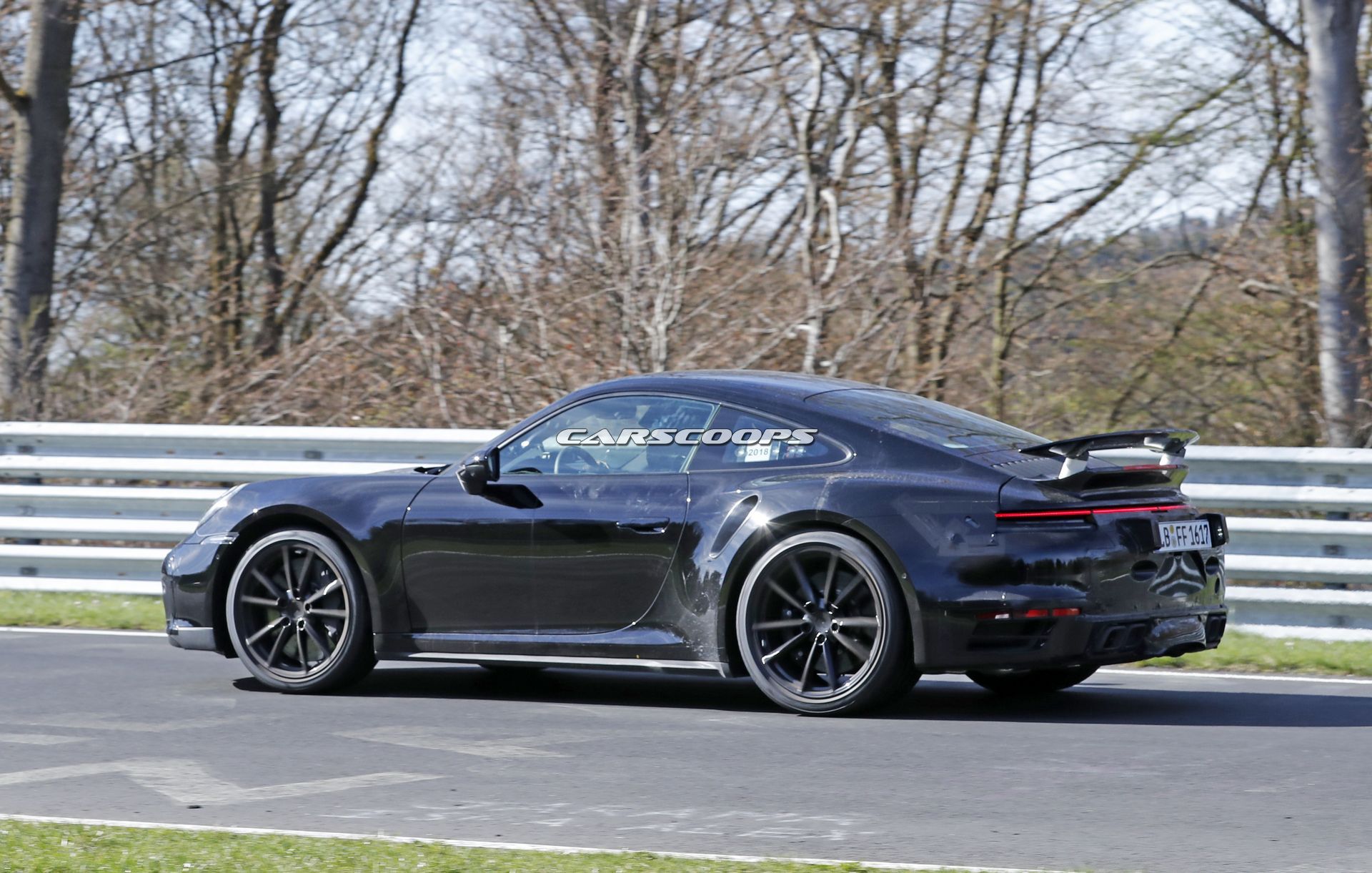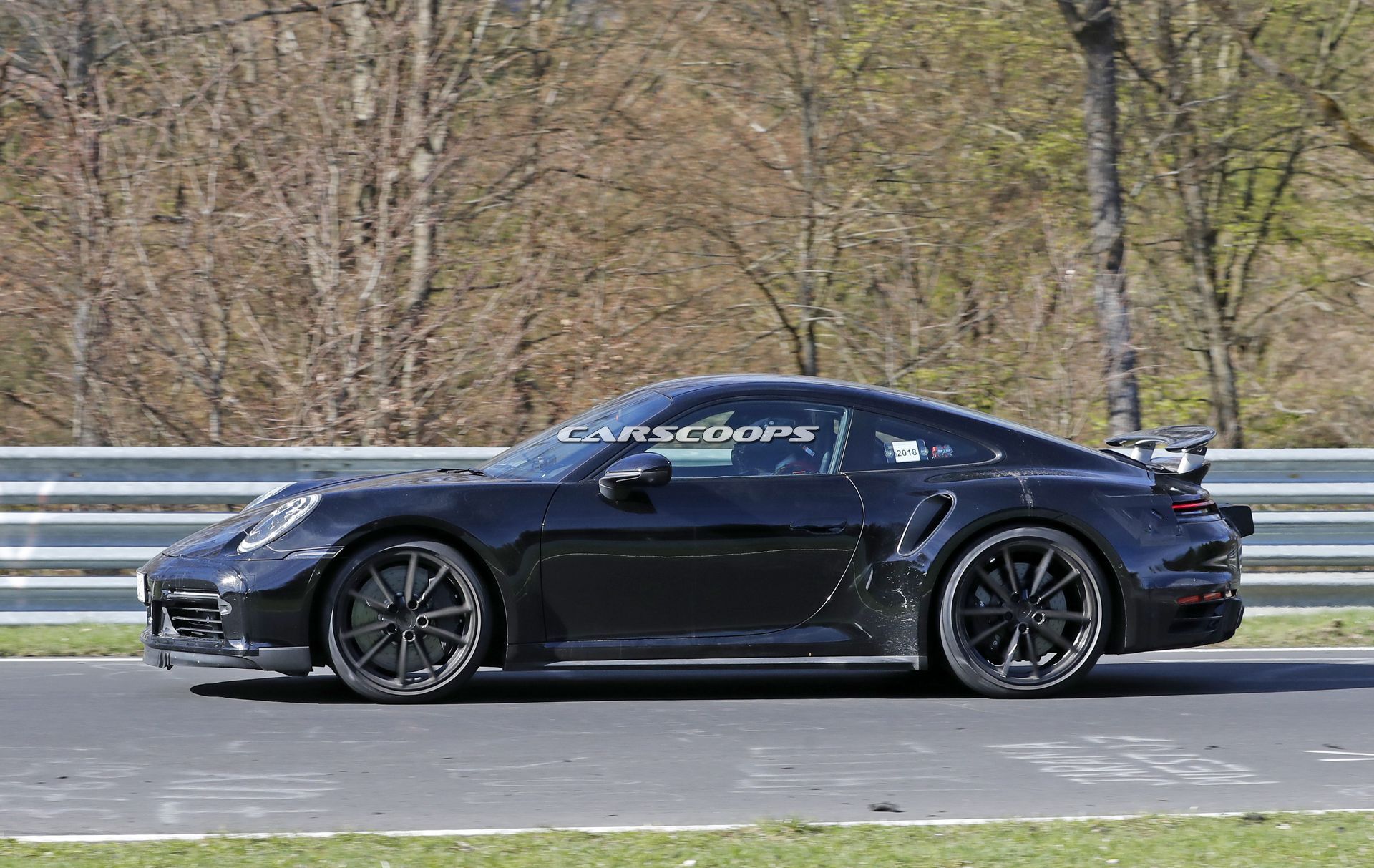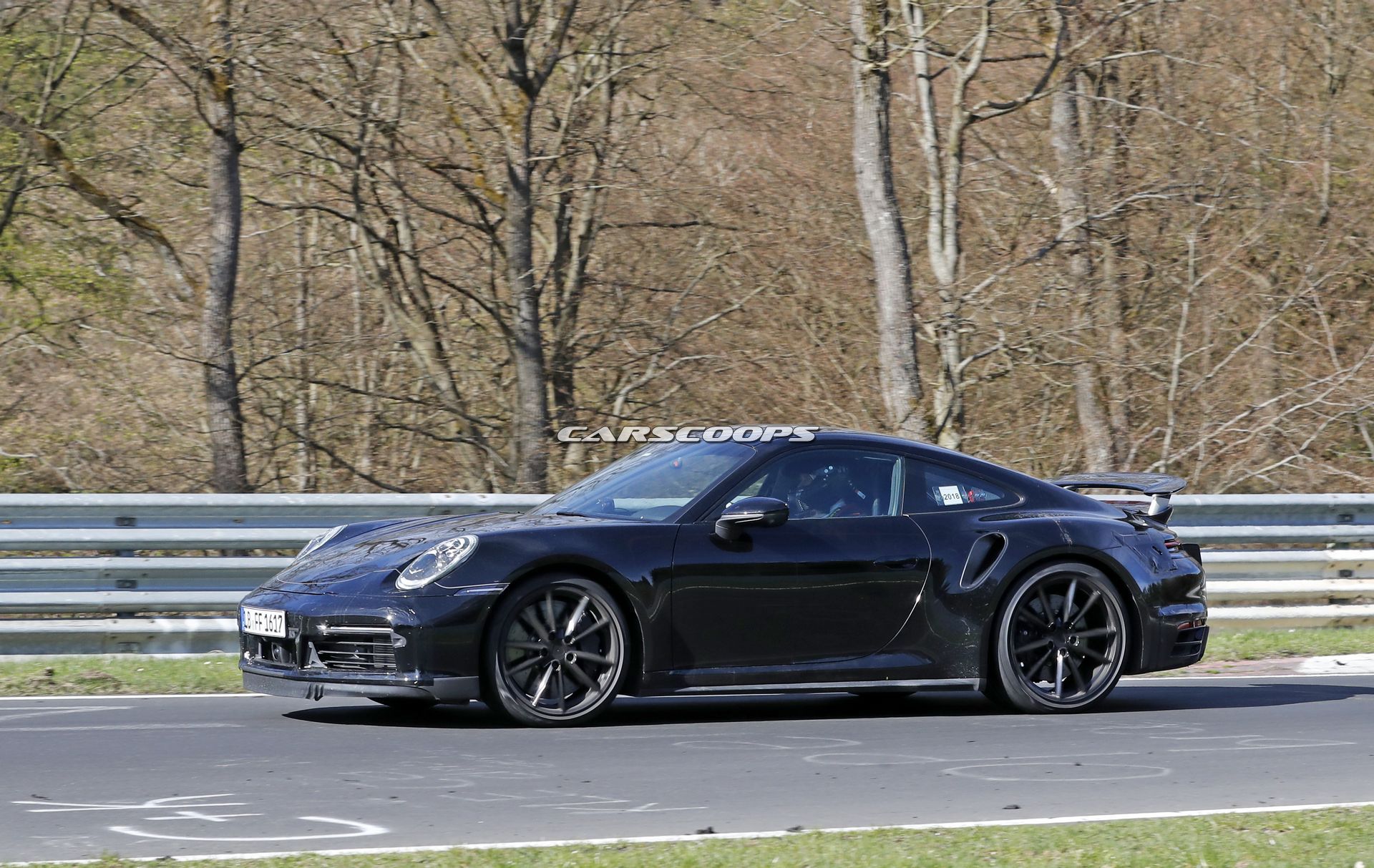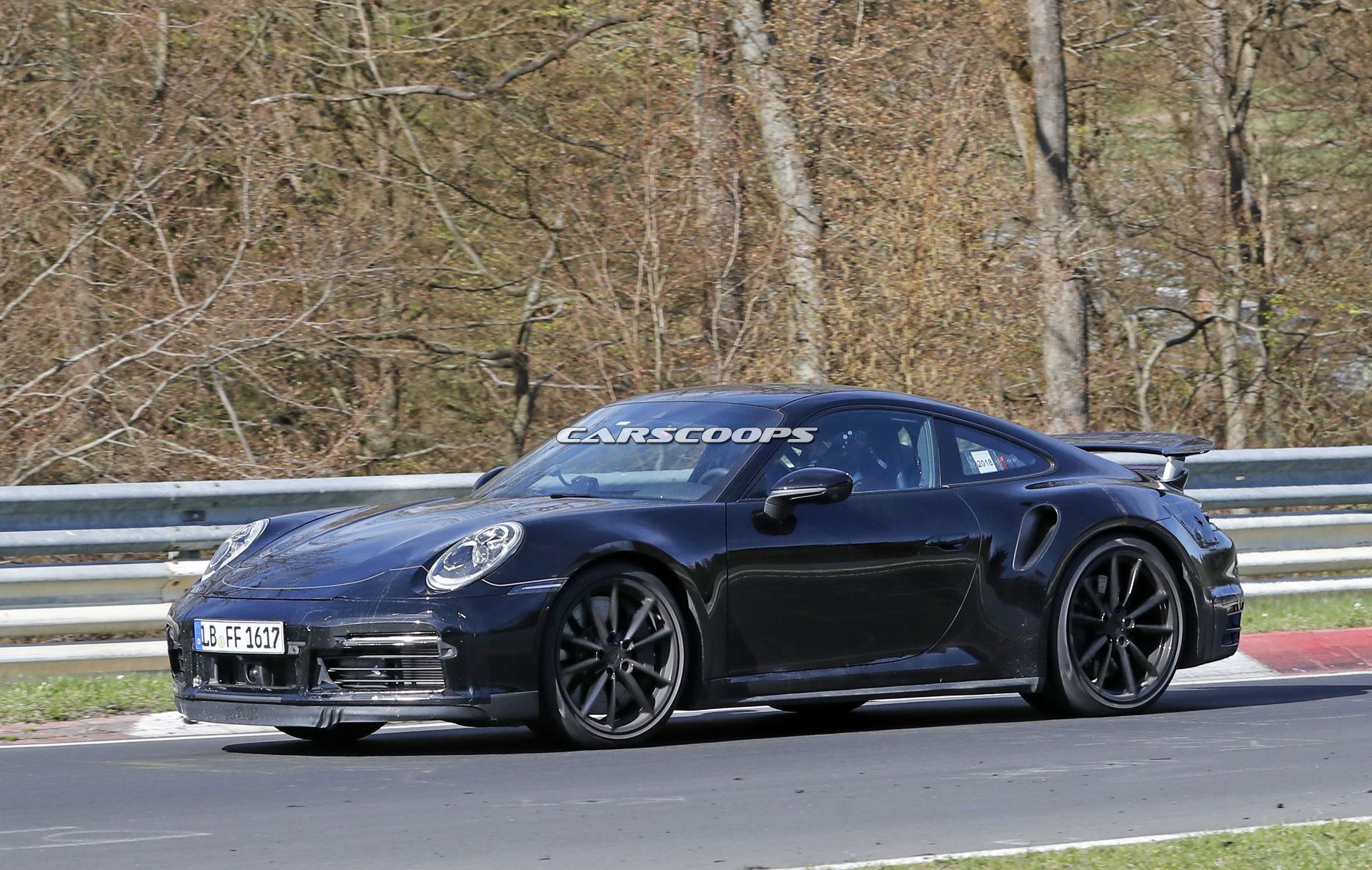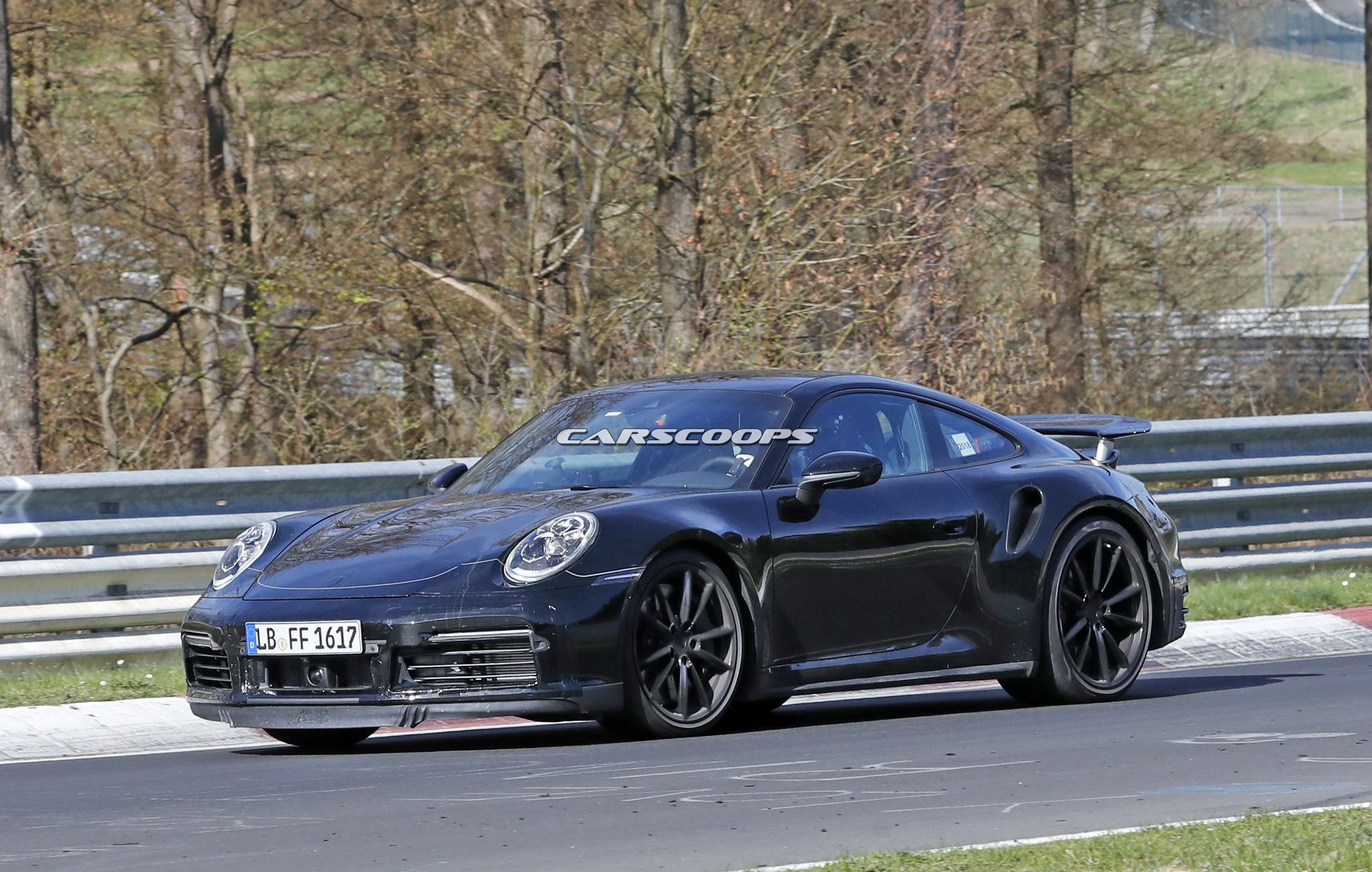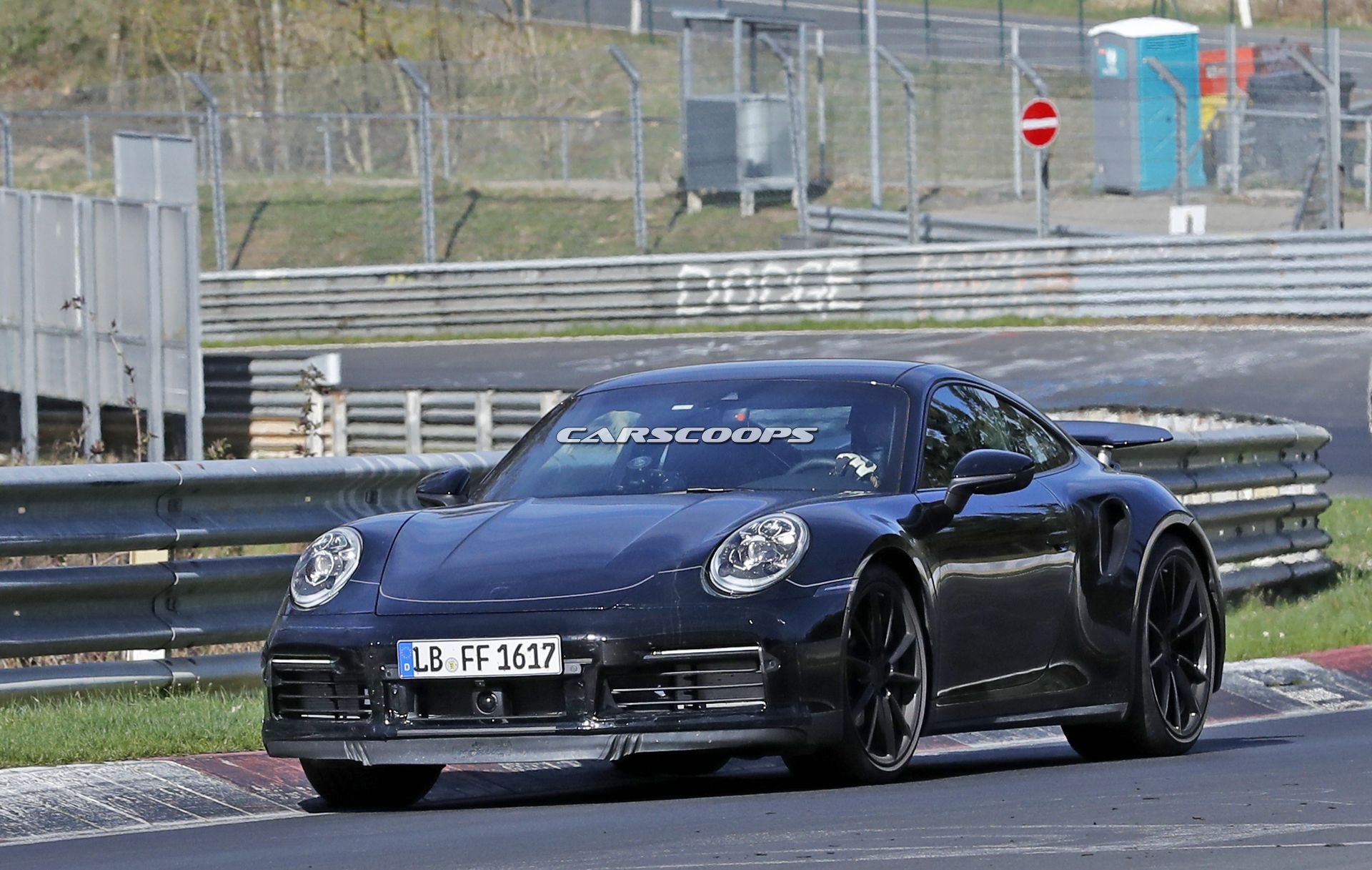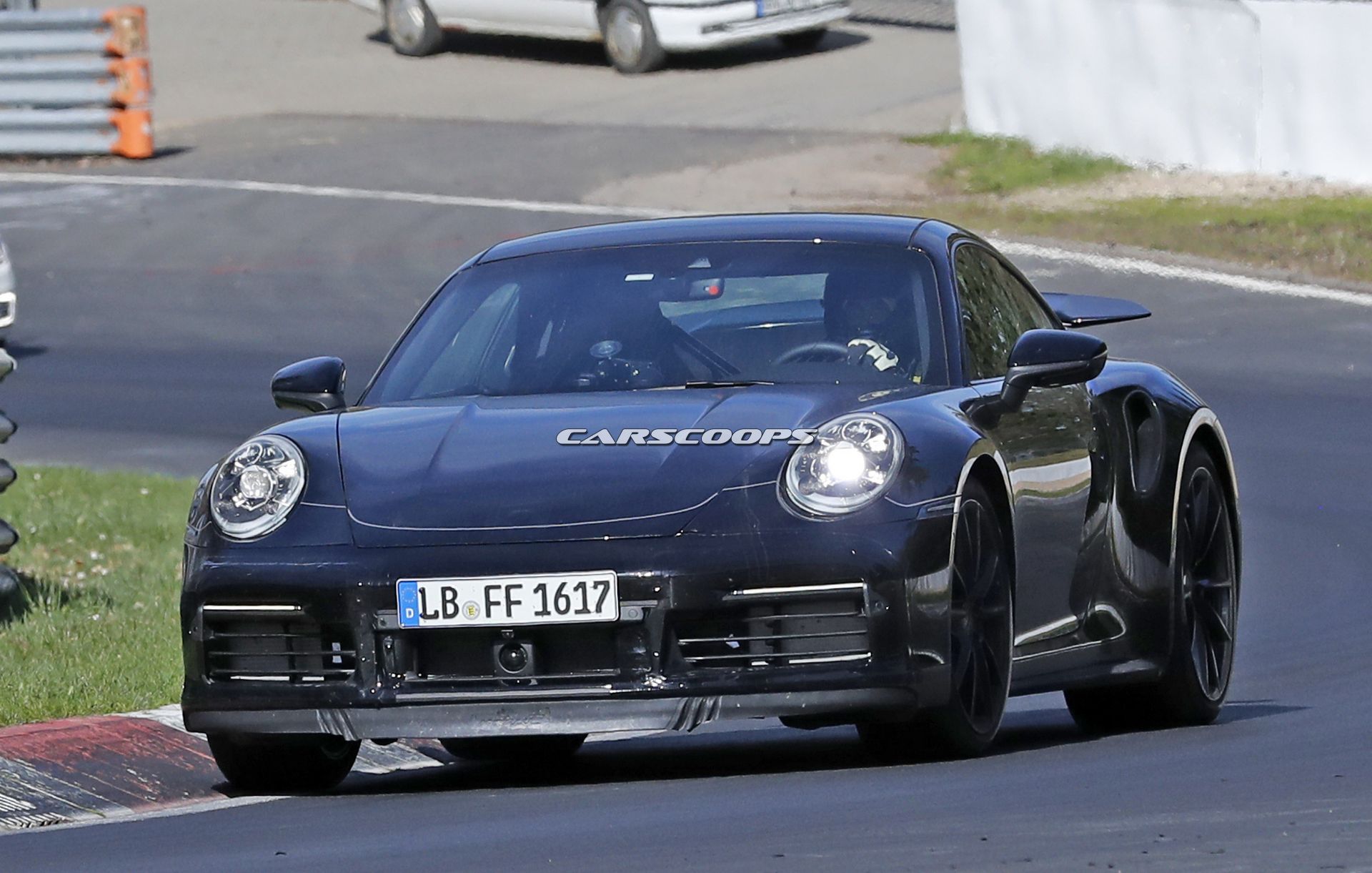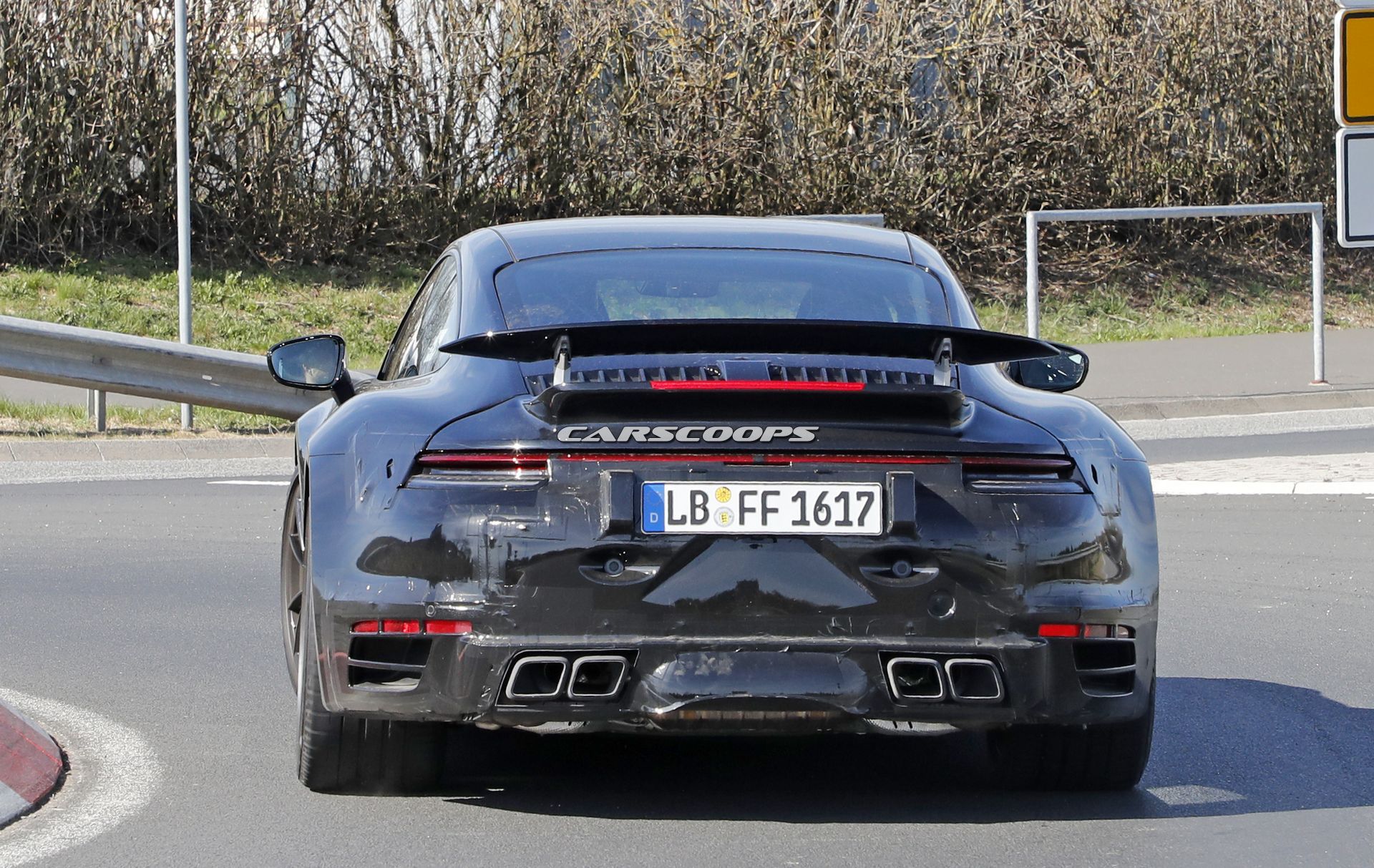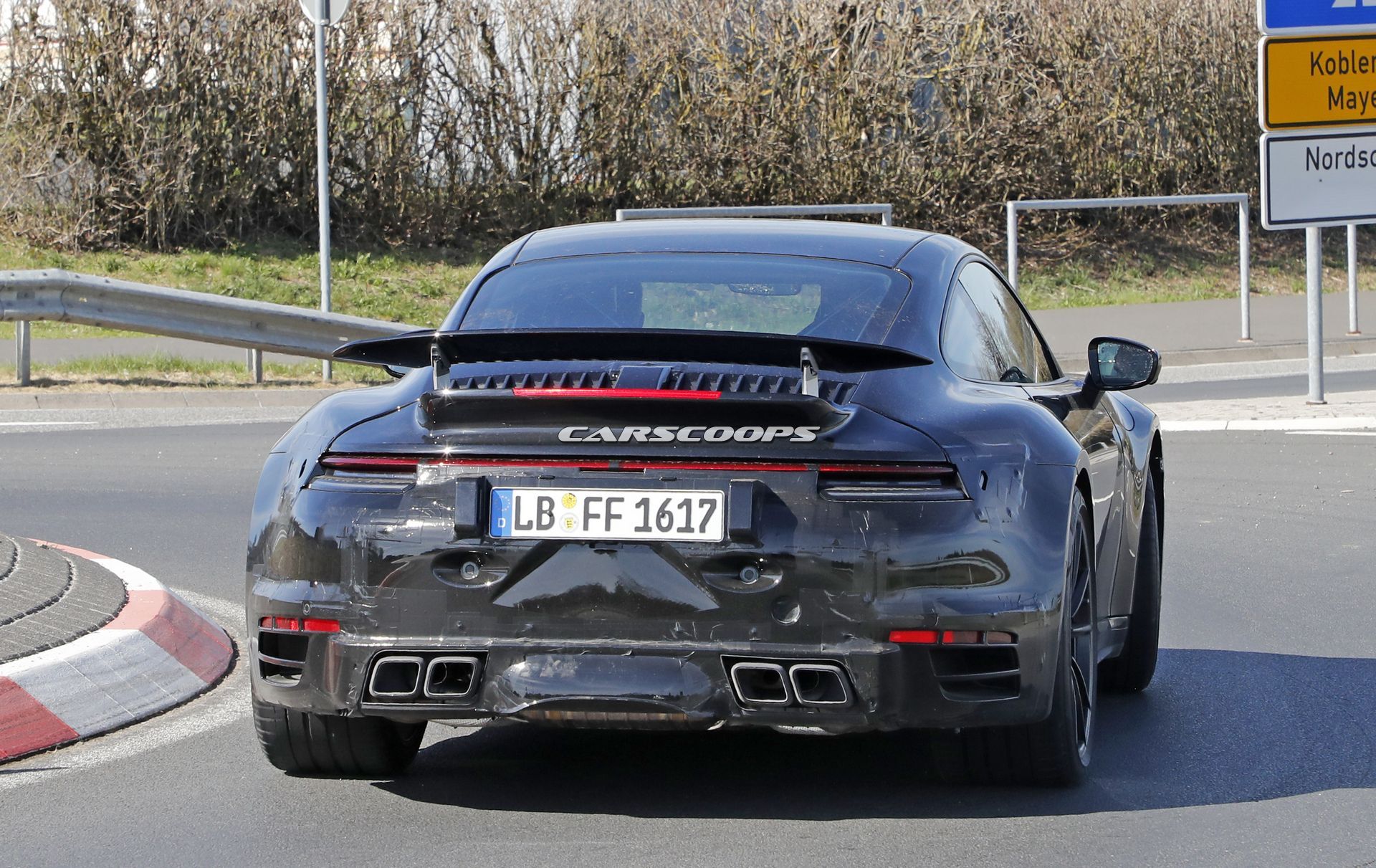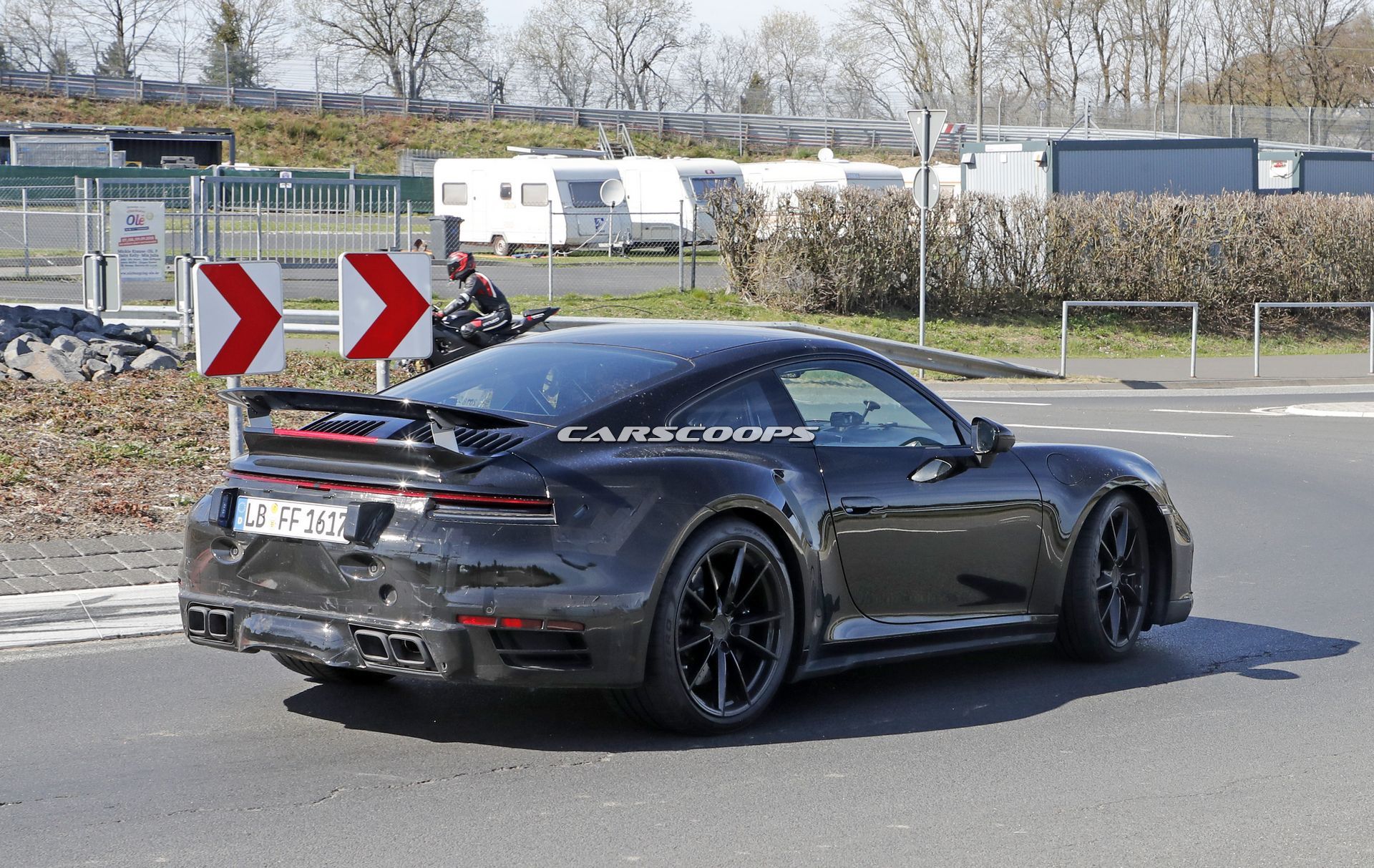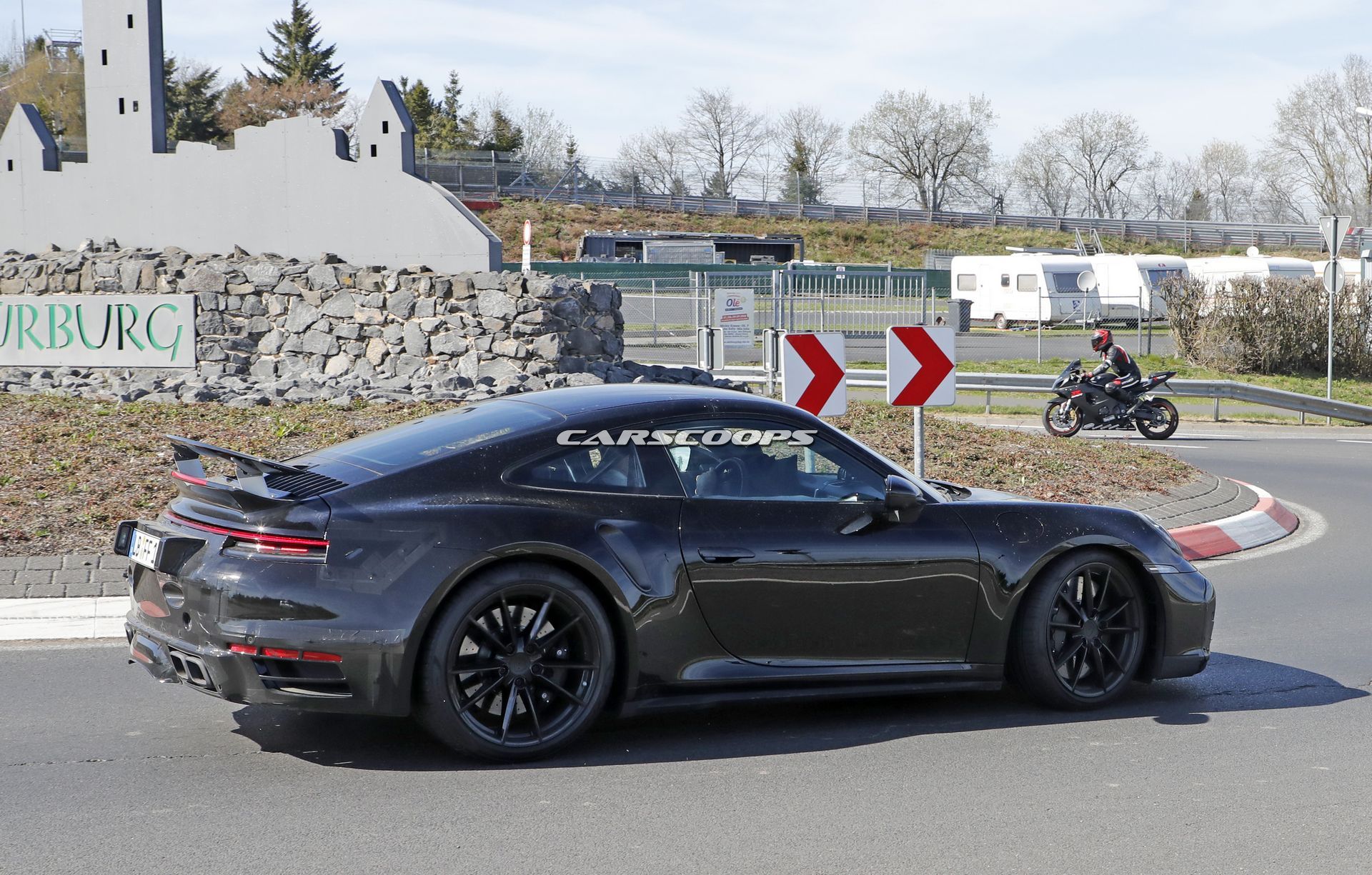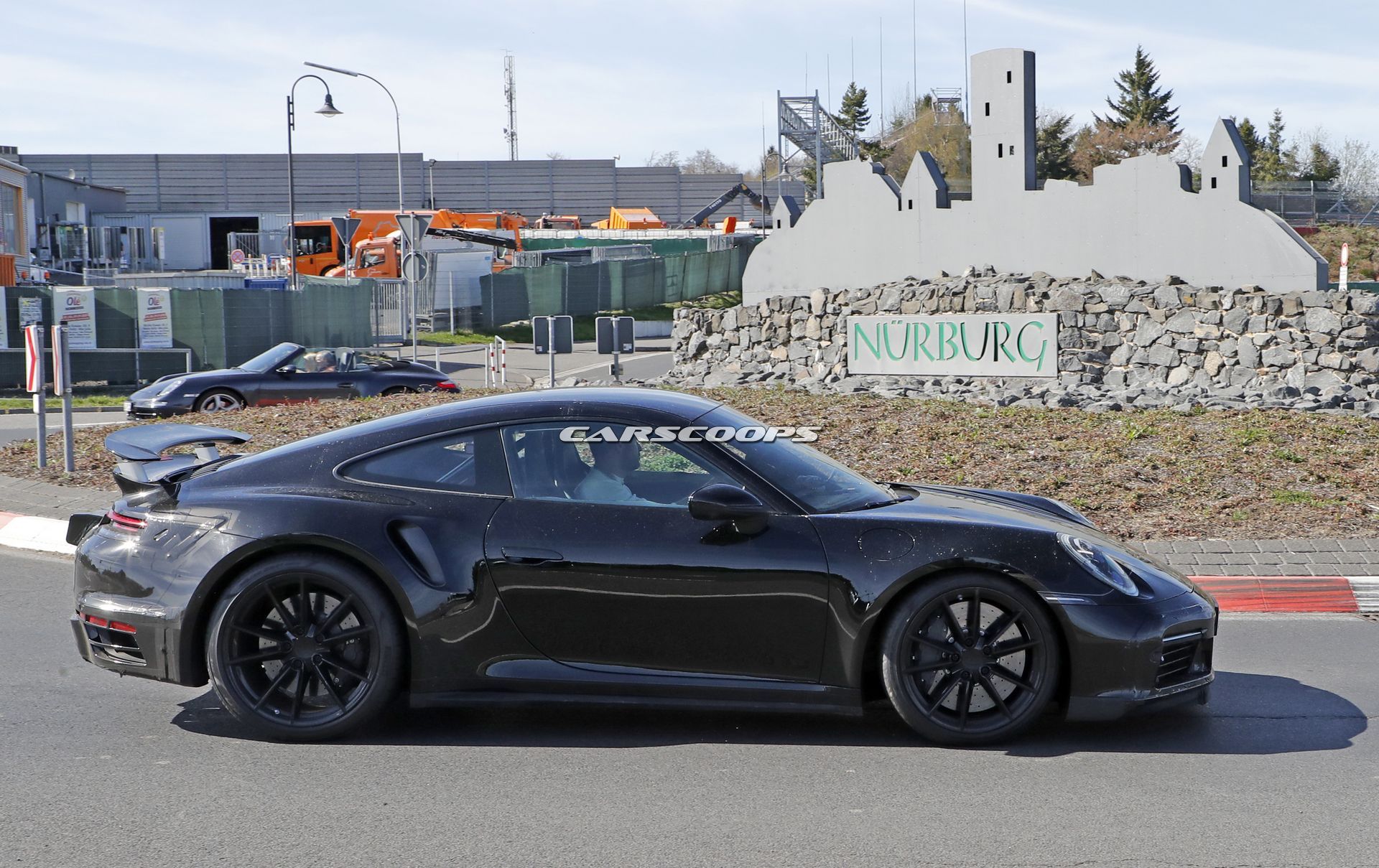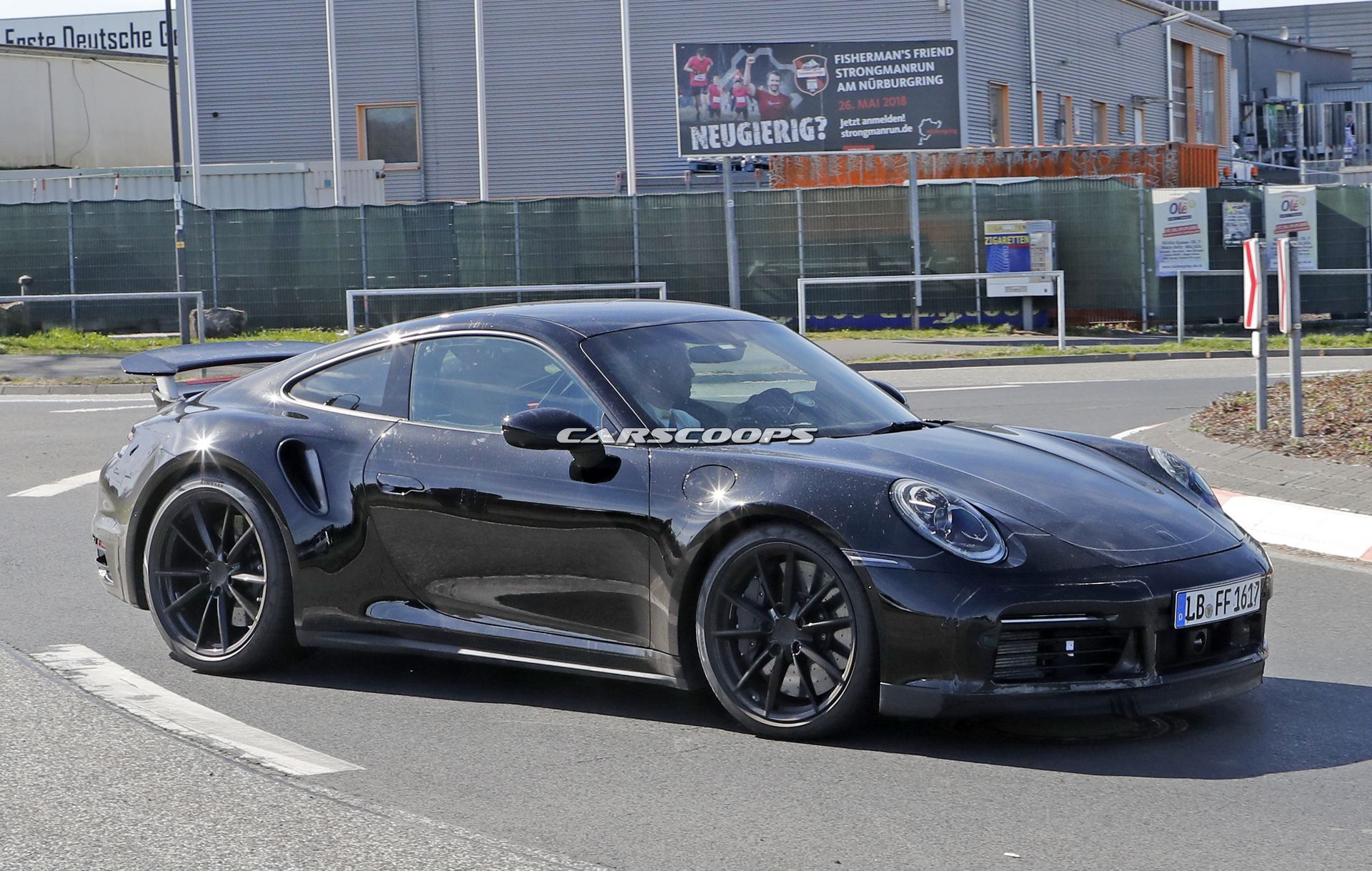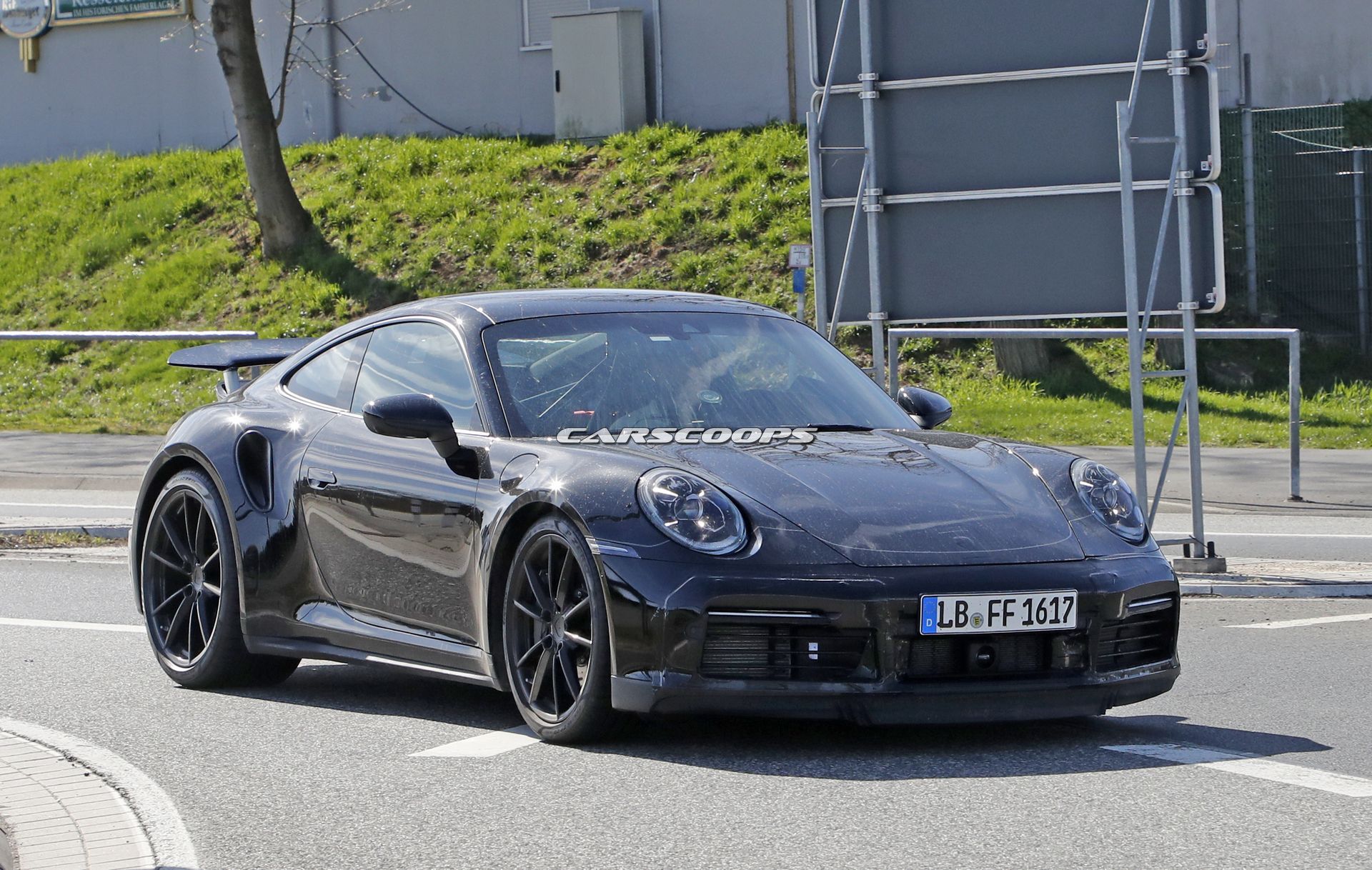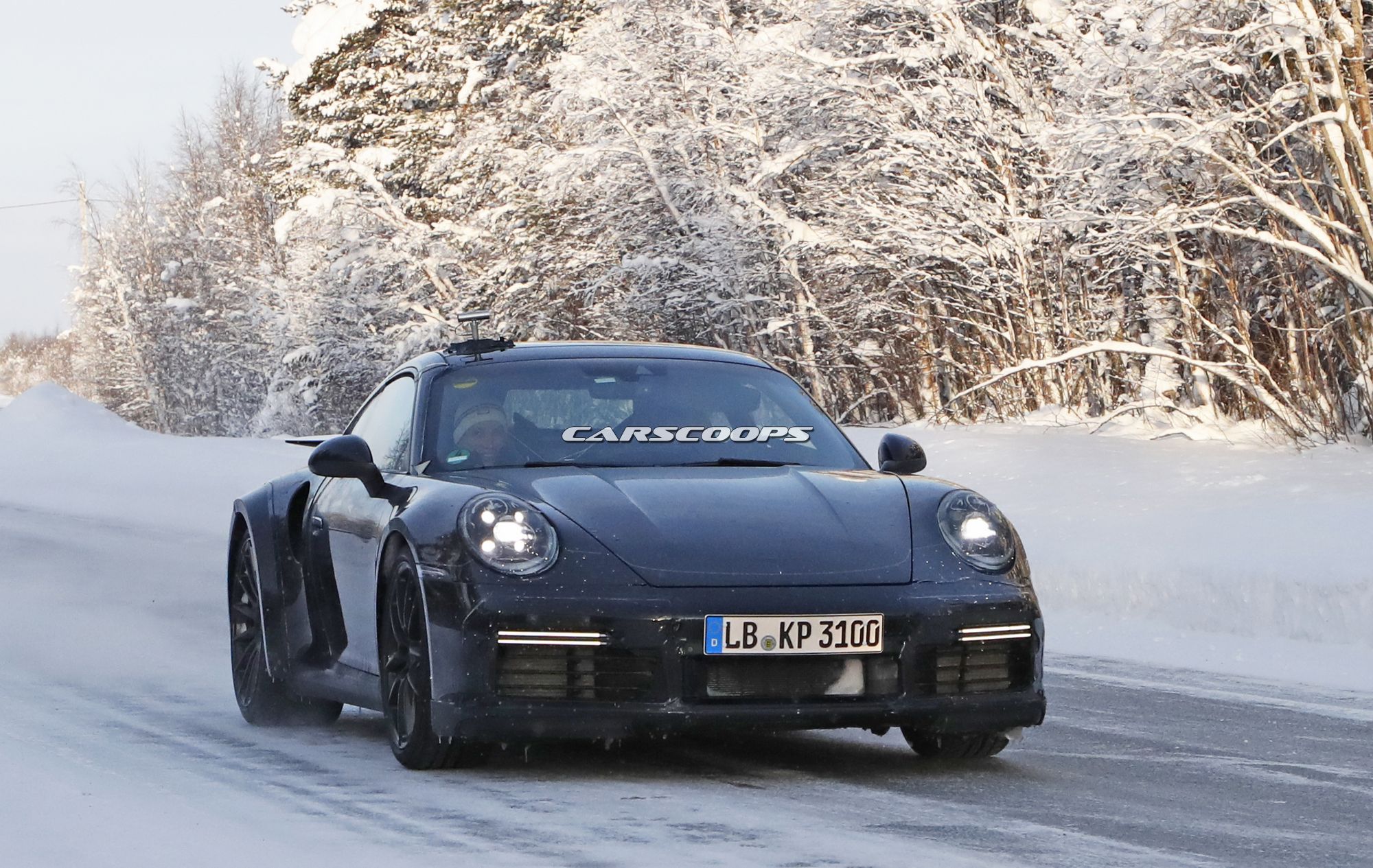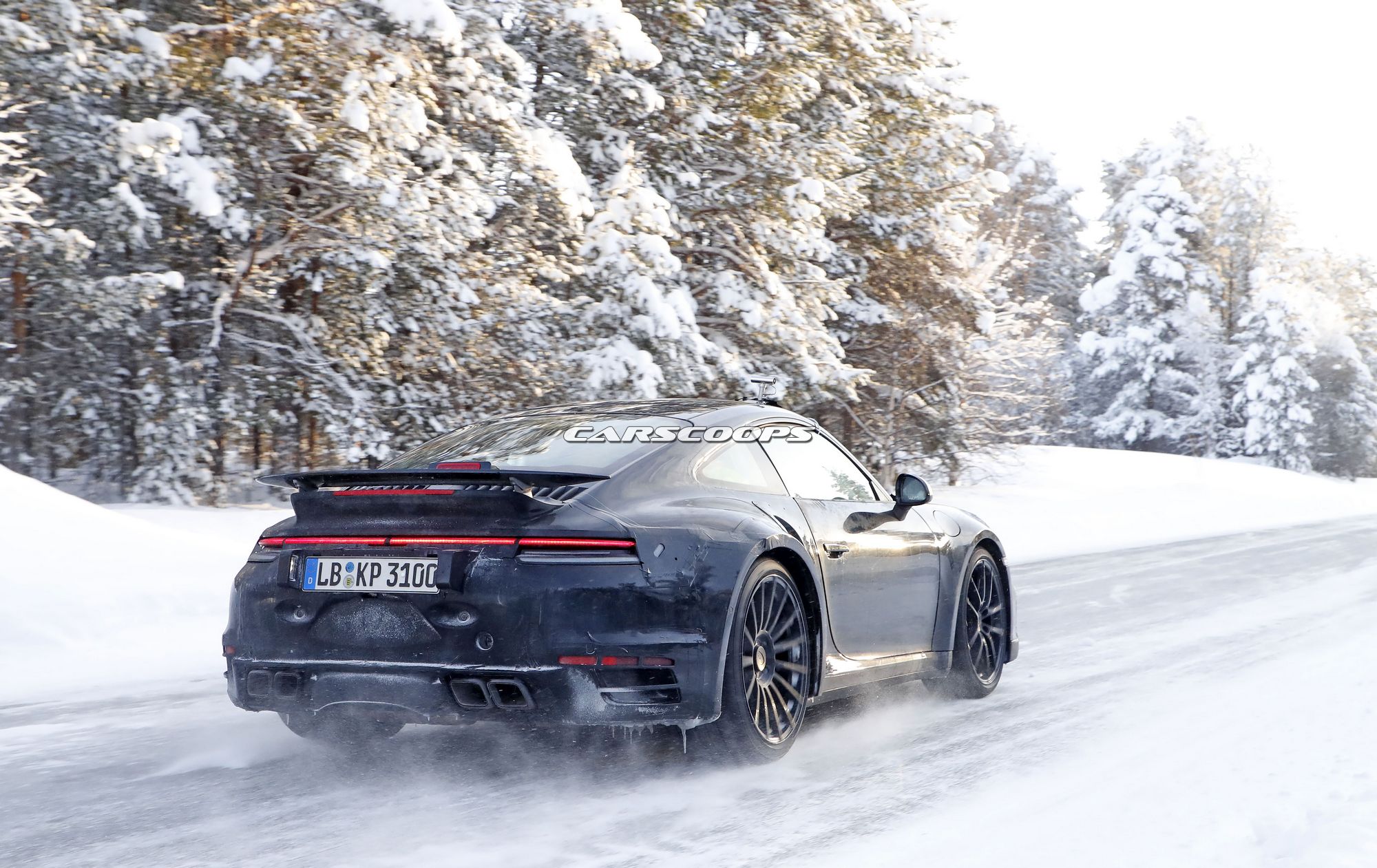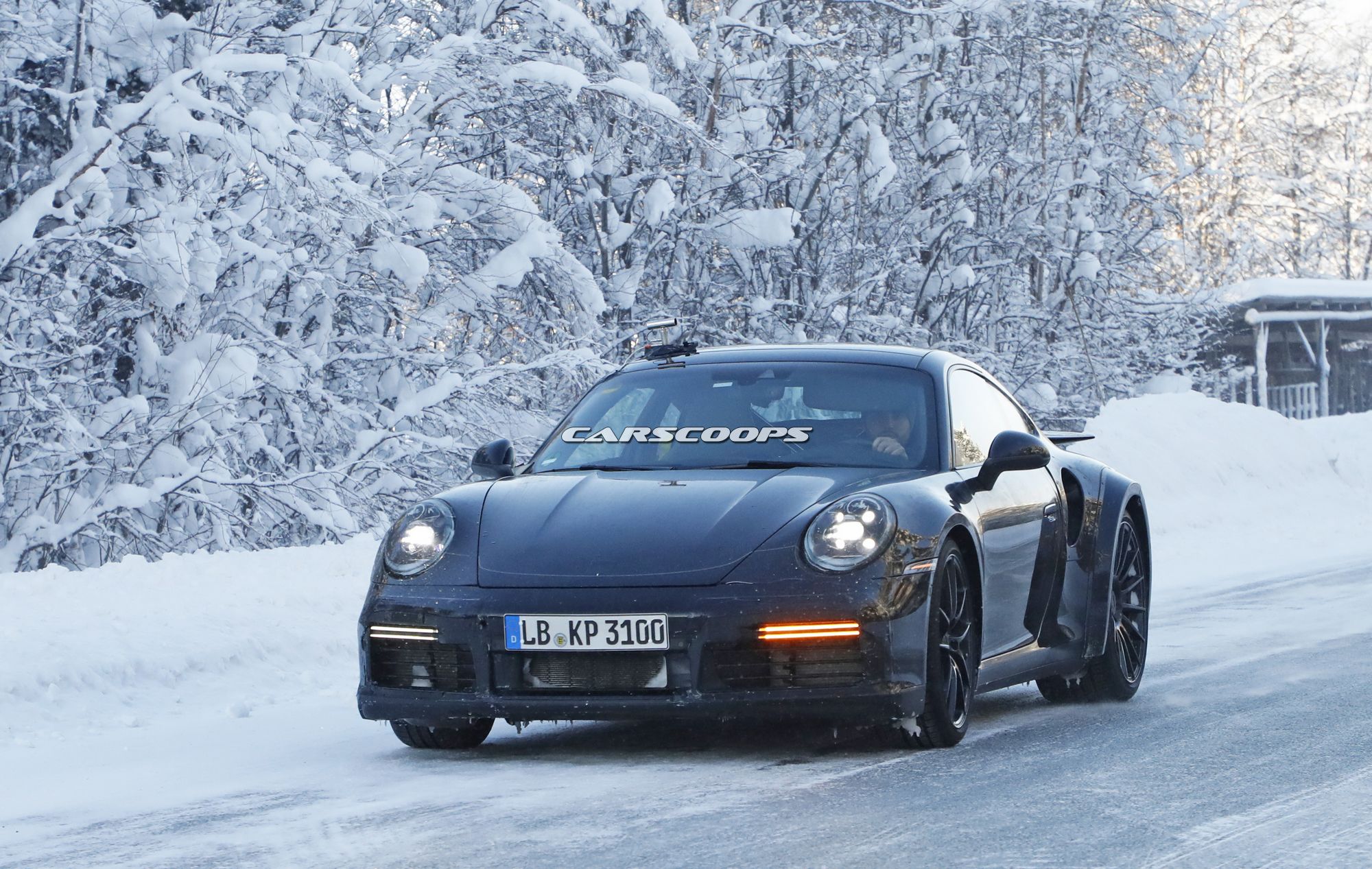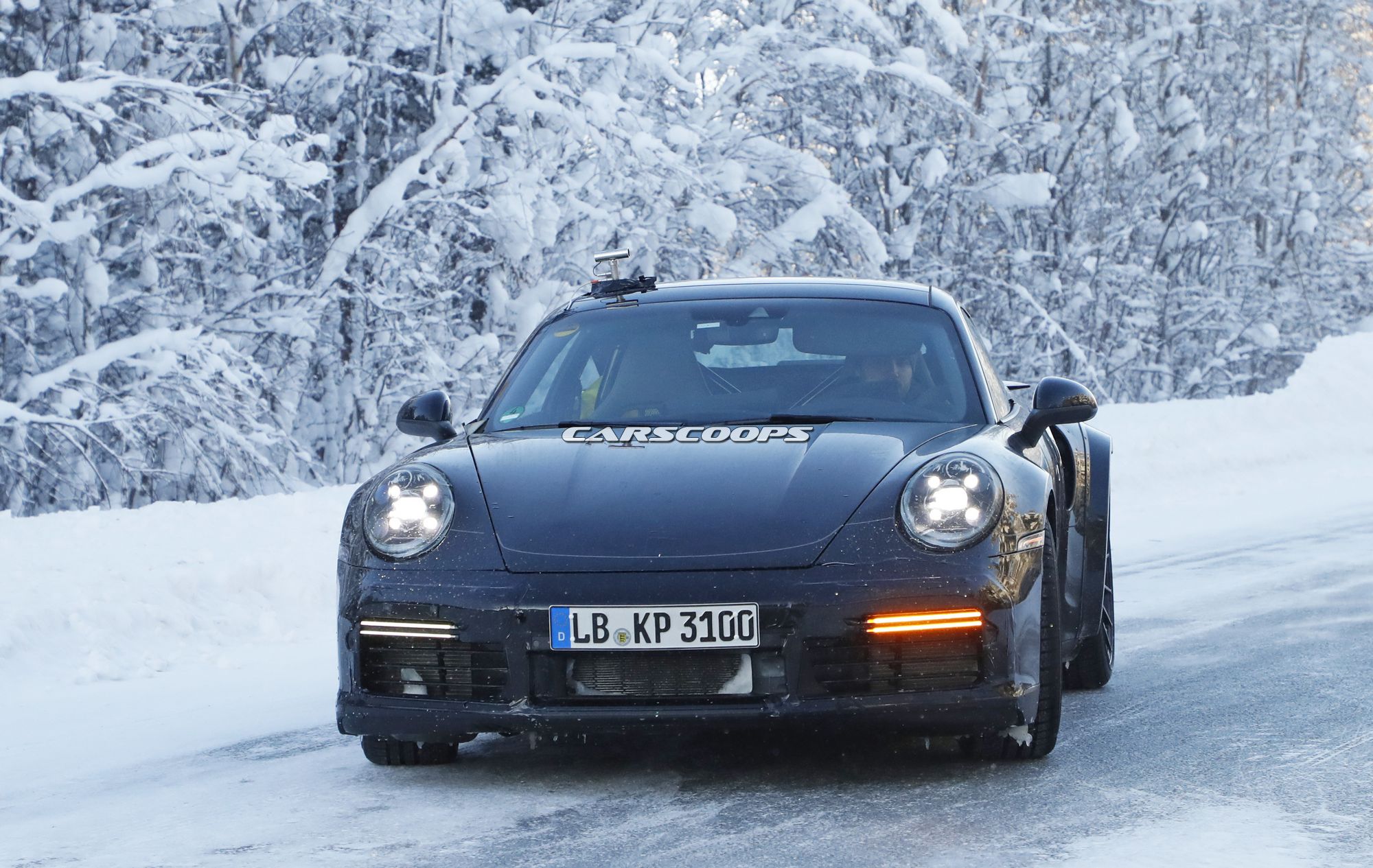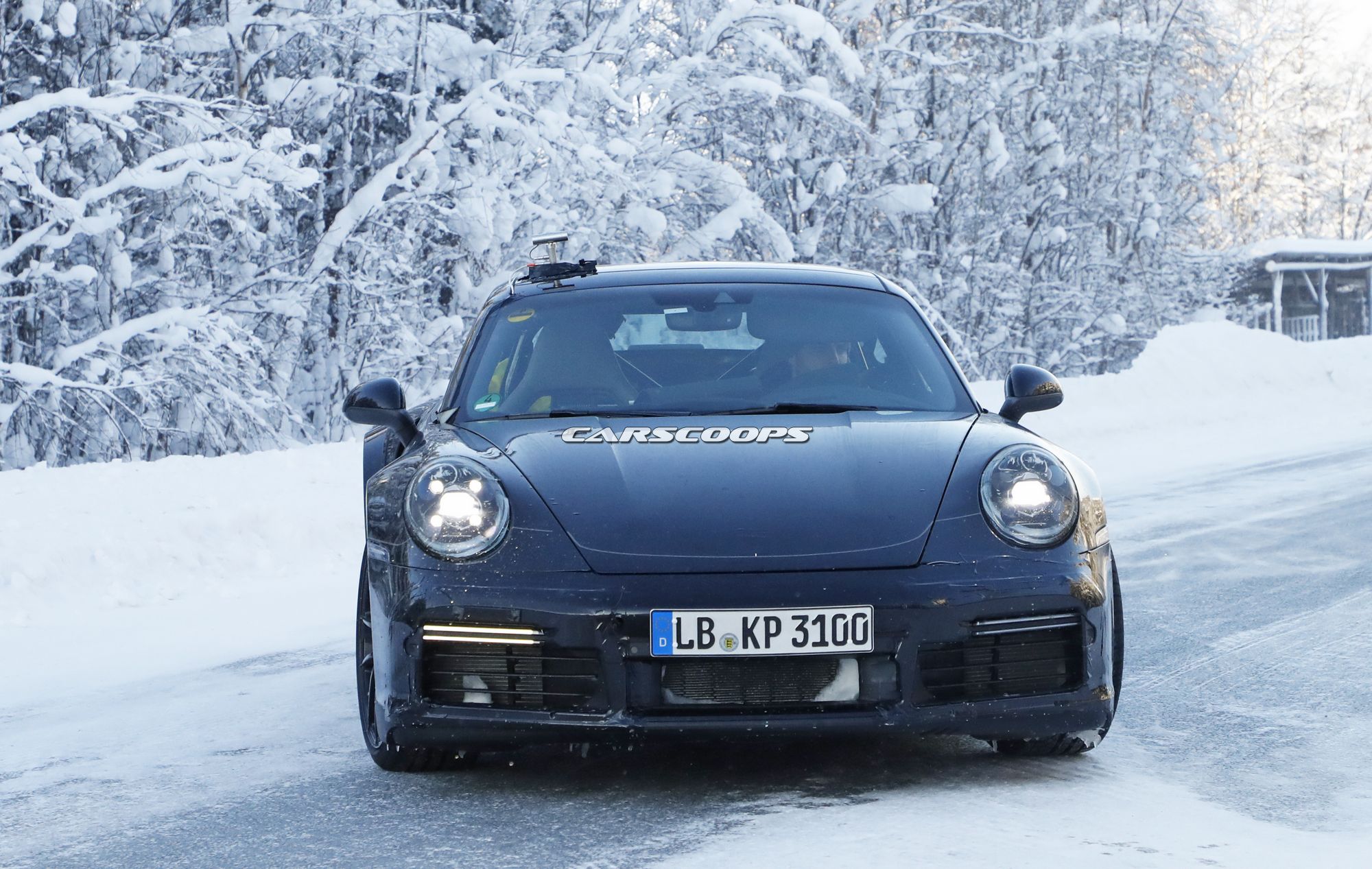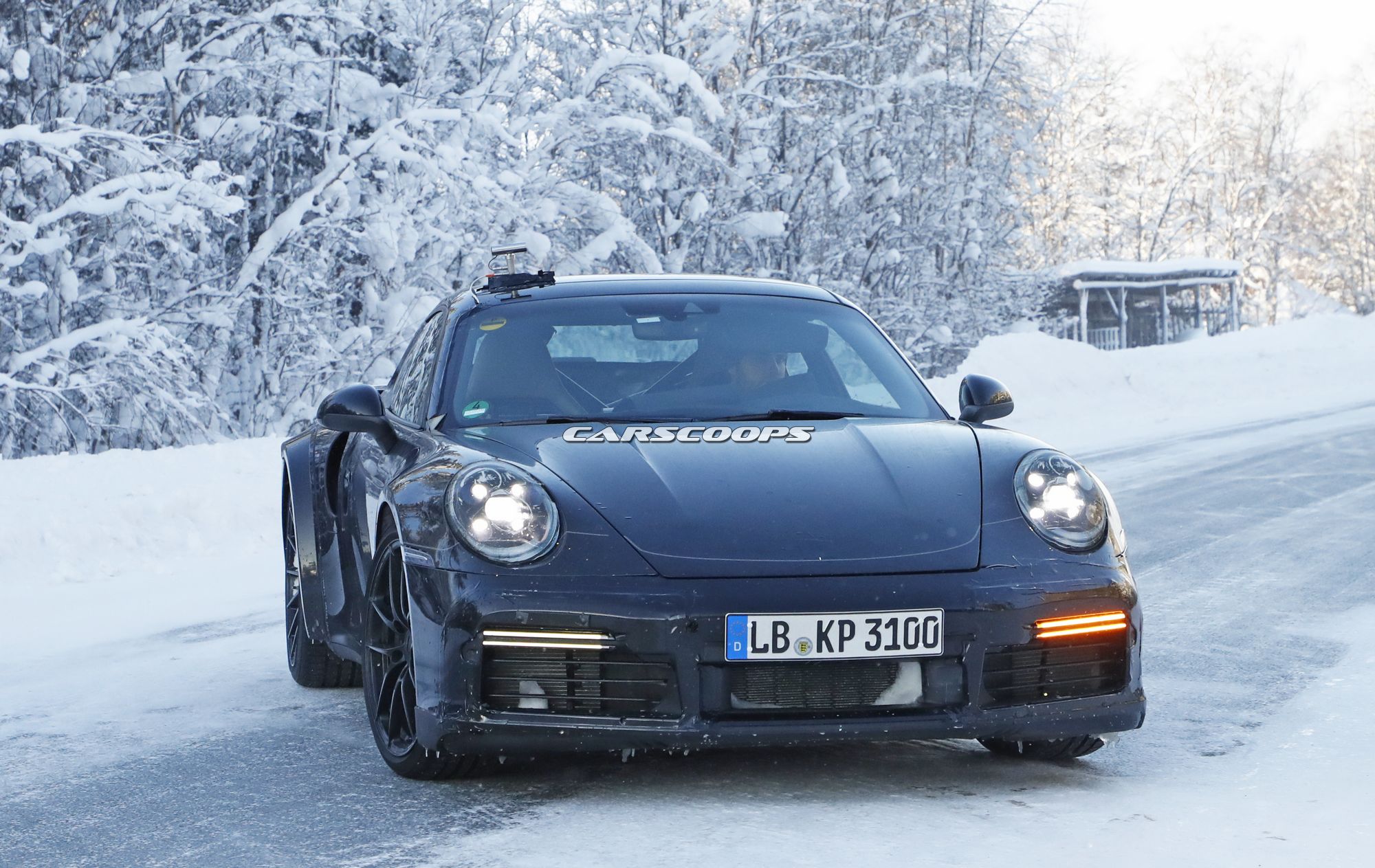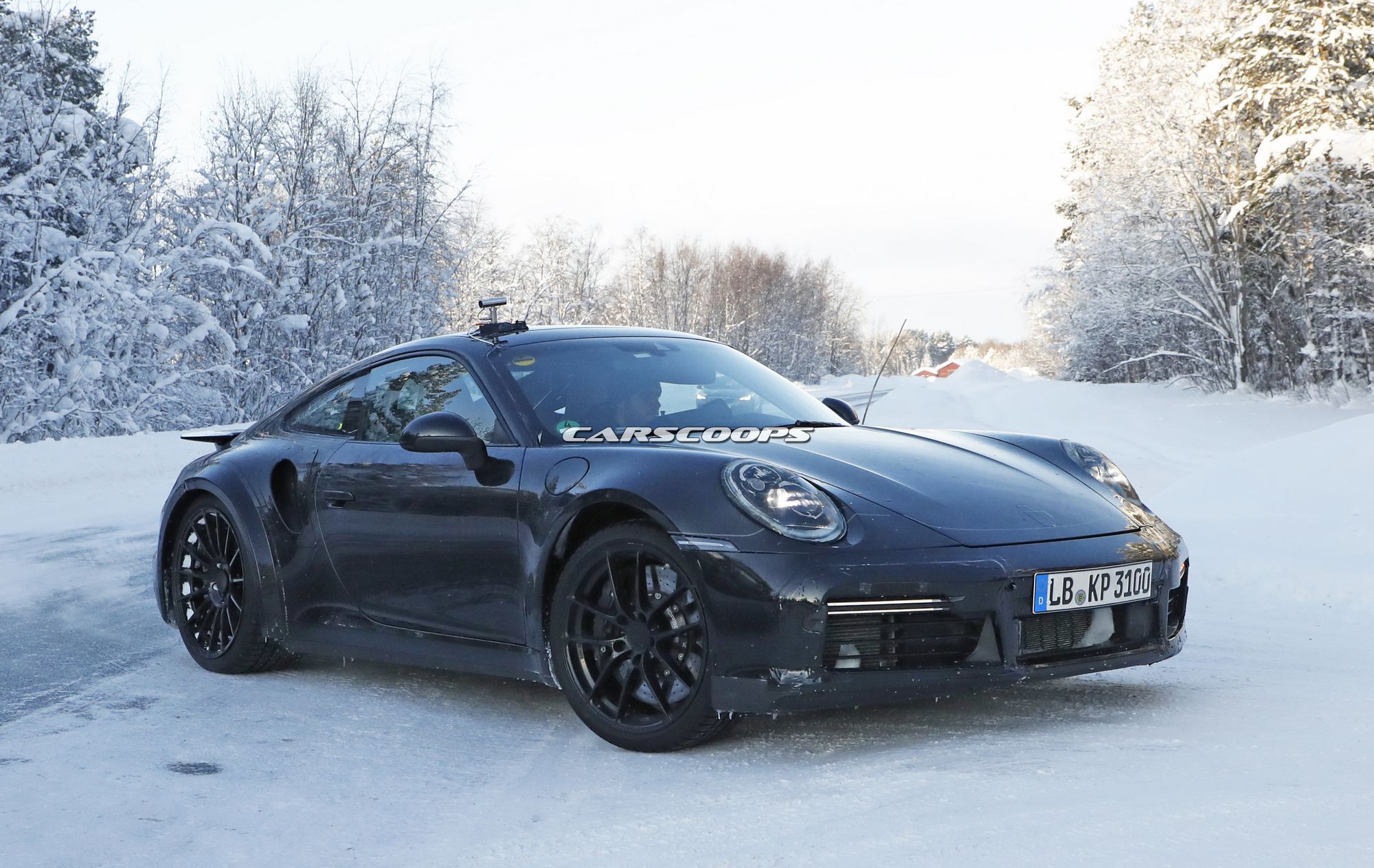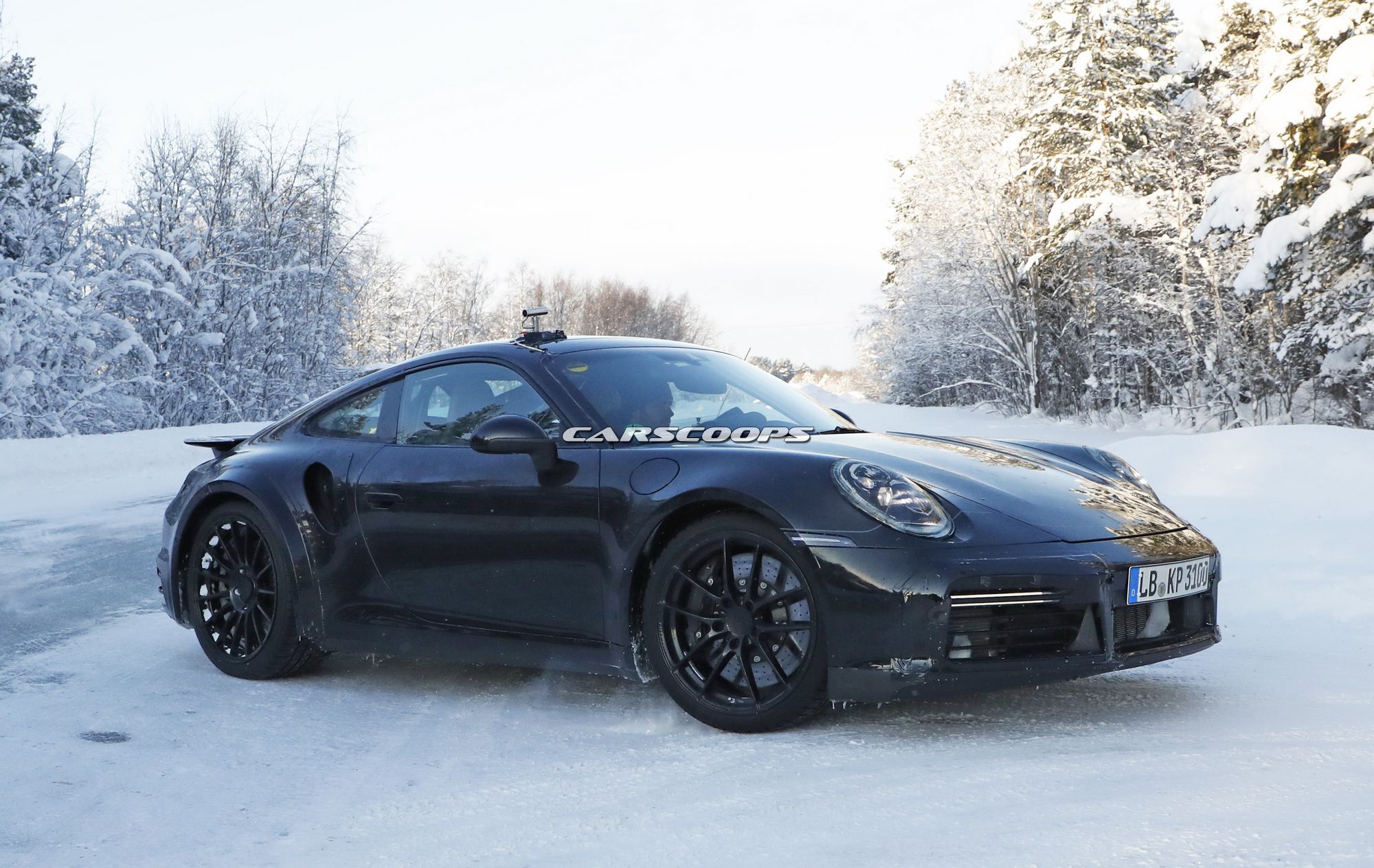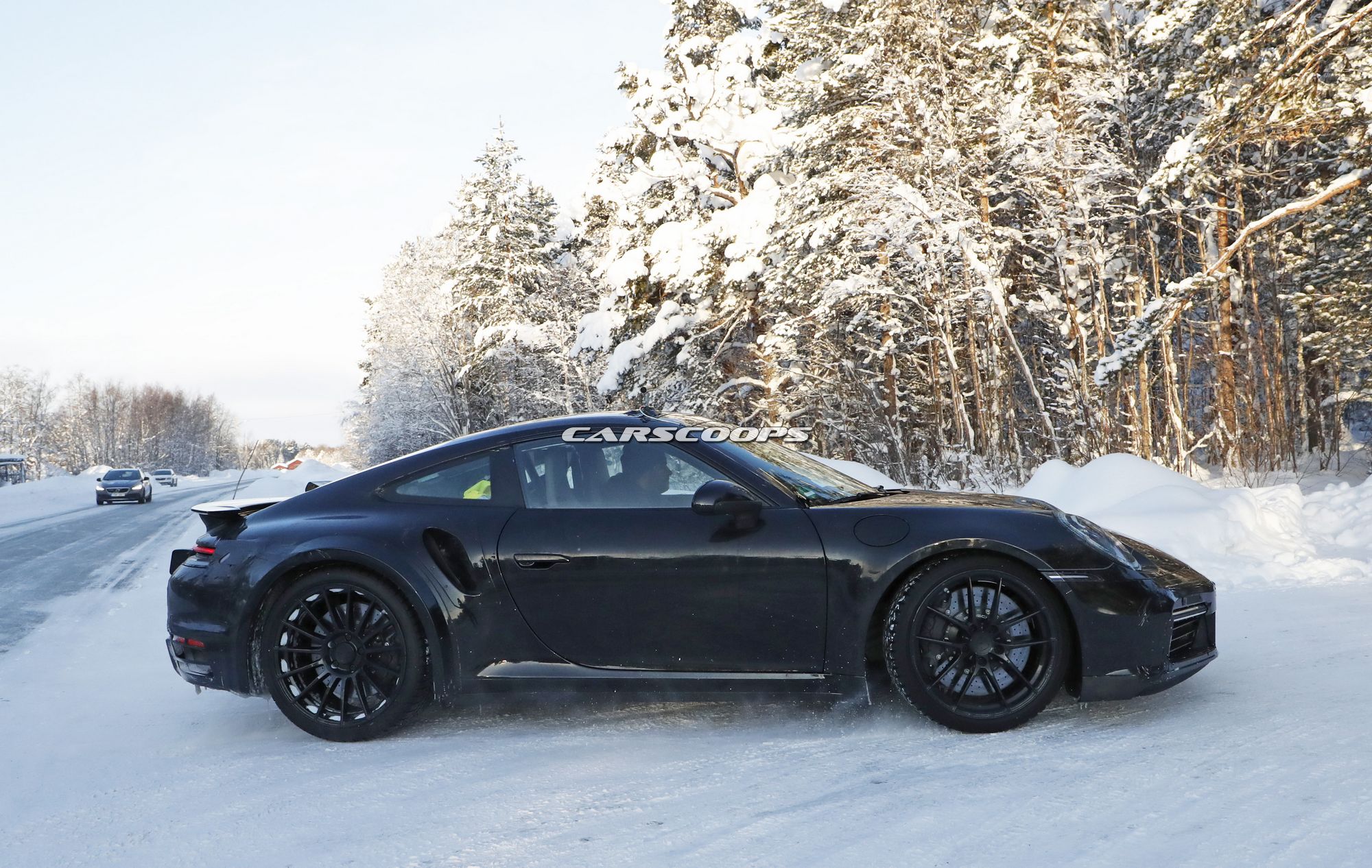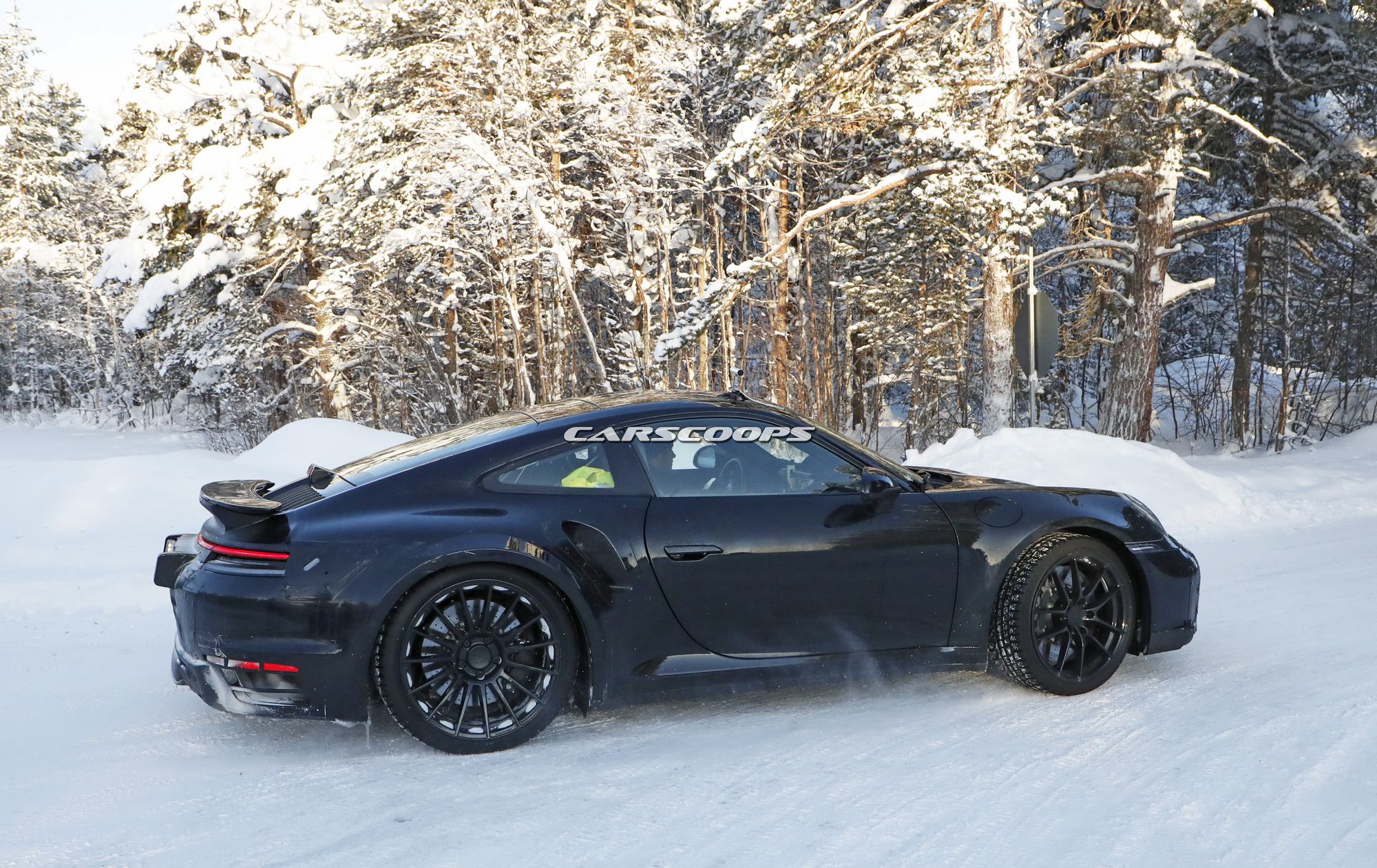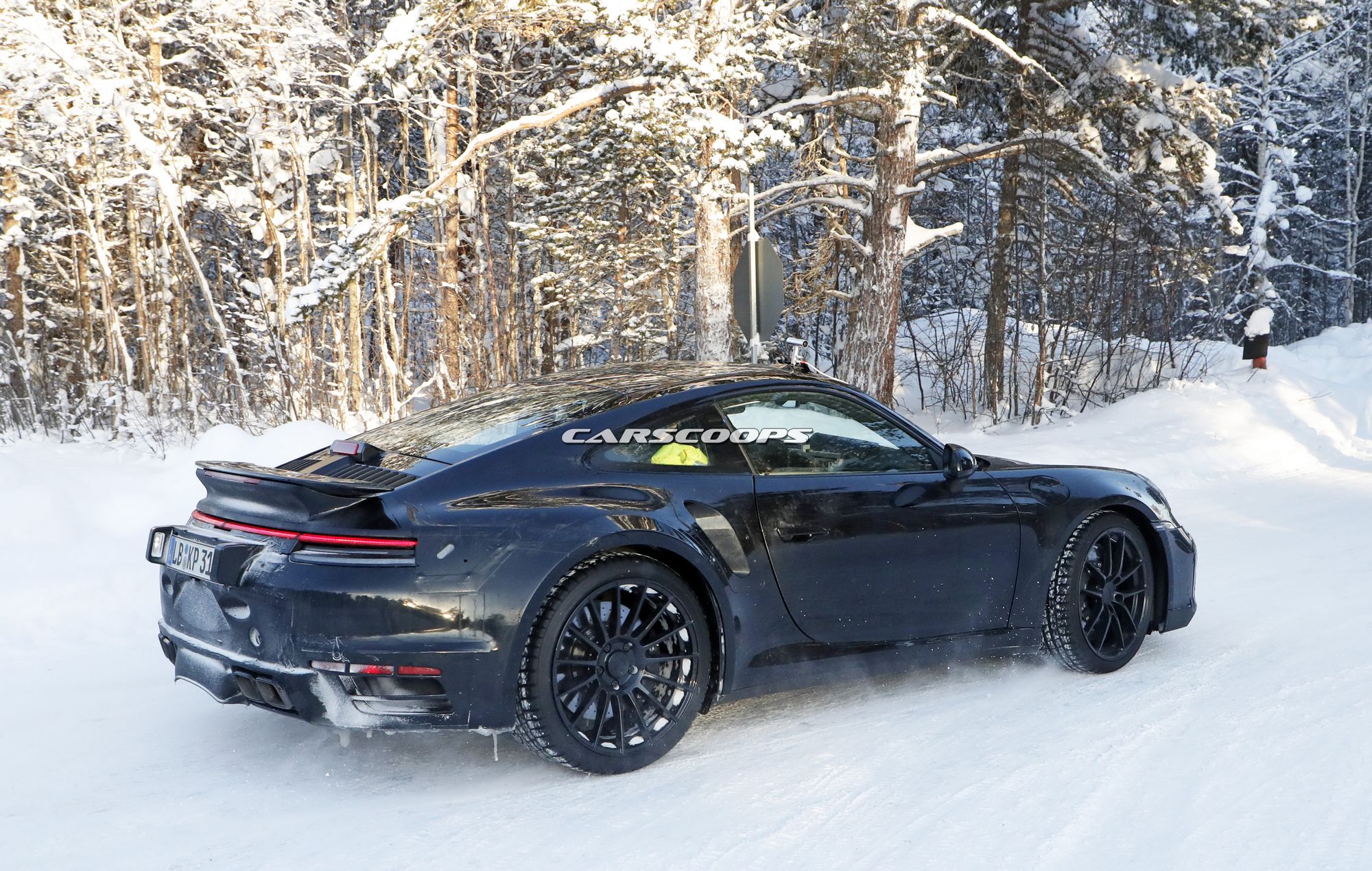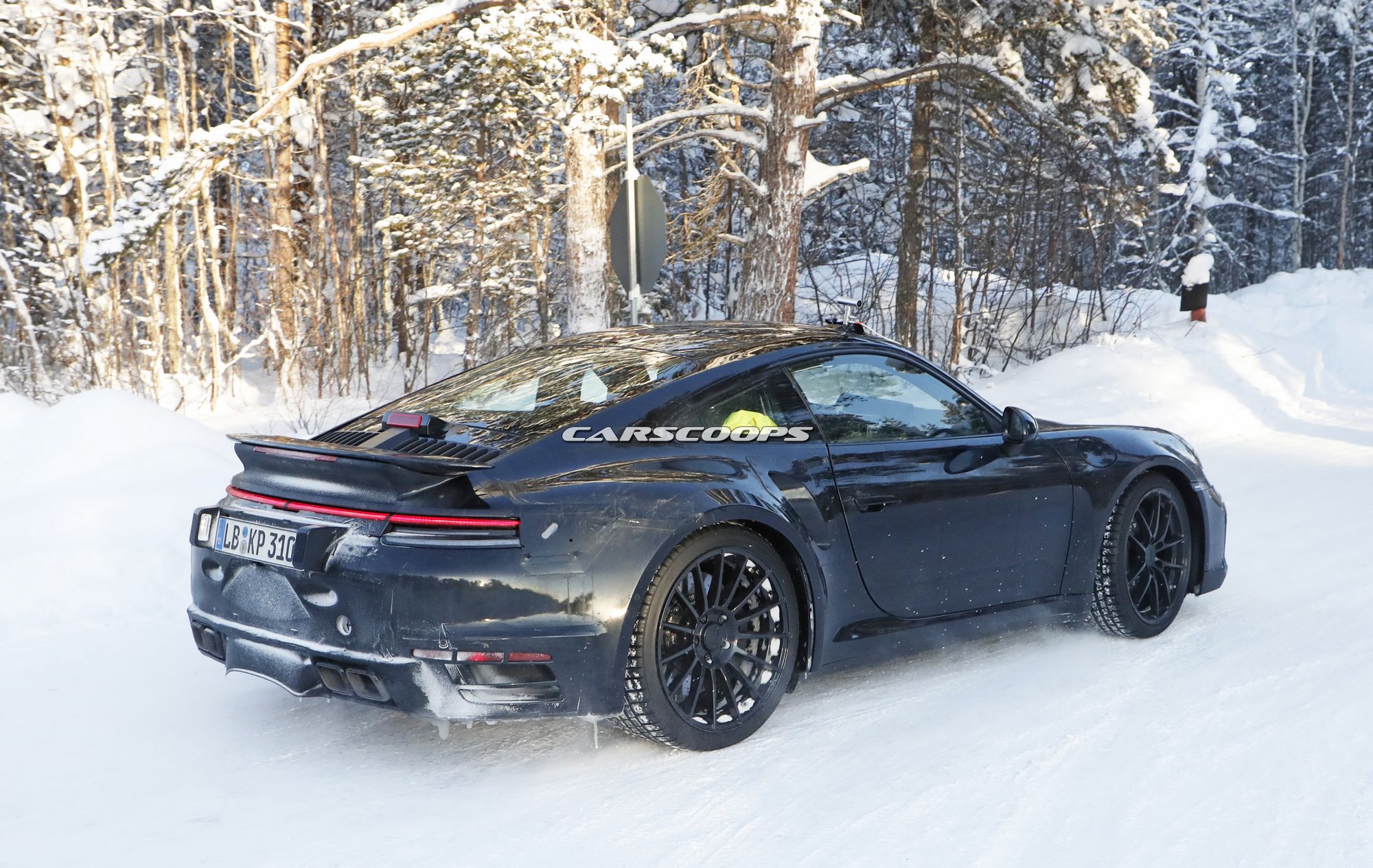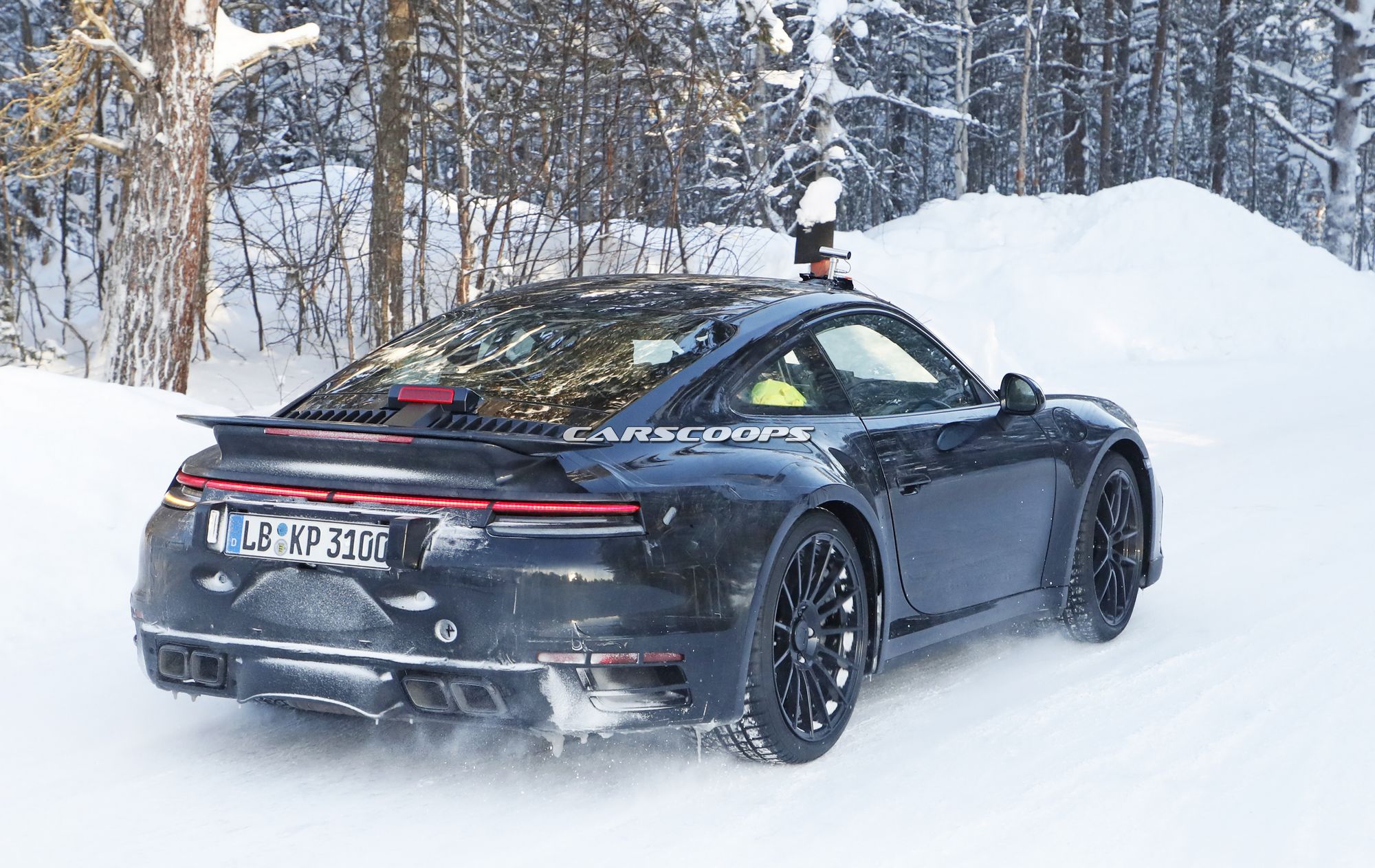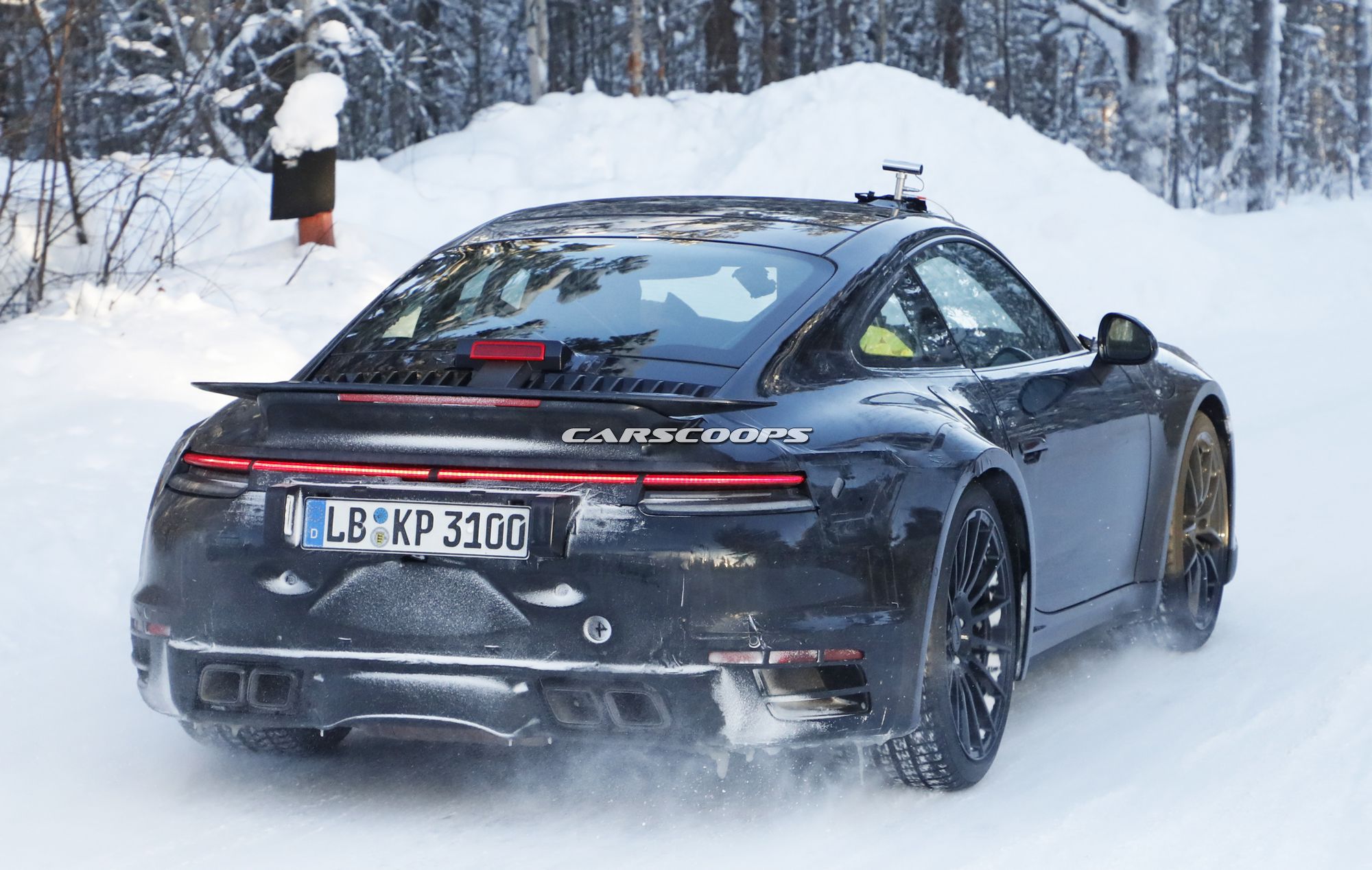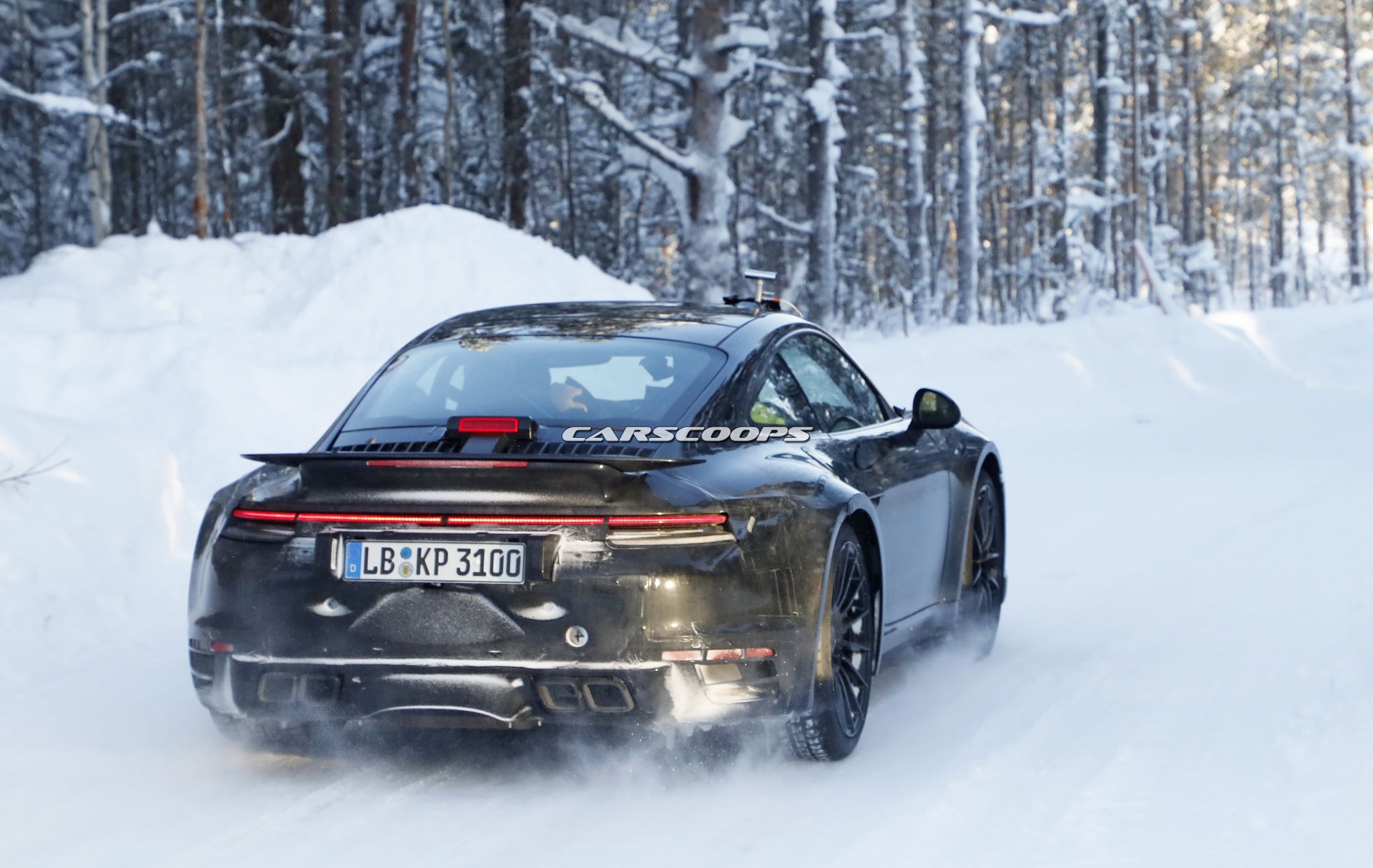Not the one to rest on its laurels, Porsche is hard at work testing the 992-generation 911 Turbo, recently taking prototypes to the snowy landscapes of Sweden and one to Germany’s Nurburgring.
These 992 Turbo prototypes appear to be wearing its production-spec body, providing us with a clear look at what Porsche’s design team have in store for us. The most significant styling changes are even wider fenders, a fixed rear wing, squared quad exhaust pipes, and Mission E-inspired taillights.
Of particular interest on the prototype testing at ‘Green Hell’ is the large rear wing which is much more prominent than the unit used by the outgoing Turbo. As is so often the case with cars like this, it appears as though the next-generation Turbo will be more track-focused than its predecessor.
Extra grunt will please buyers
We’ve known about Porsche testing the latest-generation Turbo for almost 12 months and speculation as to power output remains rife. According to our sources, the twin-turbocharged six-cylinder engine powering the new Turbo will deliver around 600 hp. In Turbo S guise, that figure will likely jump to around 630 hp, if not slightly more. As a matter of fact, it is speculated that the engine of the new Turbo S will receive components from the GT2 RS, making everything that little more extreme.
Thanks to these bumps in performance, the 992 Turbo promises to be even quicker than its predecessor from a standstill, potentially hitting 62 mph (100 km/h) in as little as 2.5 seconds. The 911 Turbo twins will also comfortably exceed 200 mph (320 km/h) without breaking a sweat.
Underpinning all 992-generation Porsche 911 models will be an evolved version of the brand’s MMB platform. Modifications will include a wider track to improve stability at high speeds. Both the wheelbase and the car’s length should remain largely unchanged.
While photos are limited of the new 911’s interior, a peek at the latest-generation Cayenne and Panamera provides a hint at the changes afoot. With this in mind, the new 911 range may only feature a single analog dial that houses the rev counter while all other information is shown on two circular, digital displays. Elsewhere, the dashboard should house a new-and-improved touchscreen, hopefully, one that’s similar to the unit from the current Panamera but on a slightly smaller scale.
Entry-level variants of the next-gen Porsche 911 aren’t expected to land in dealerships until 2019. Consequently, Porsche owners shouldn’t expect to receive their new Turbo models before the 2020 model year. Based on what we’ve seen, however, we think the wait will be worth it.
Article updated with new spy photos and information on the 992 Turbo



